#i might do a post-mortem on it. i might actually submit it to one of my lecturers — see if he thinks there’s something worth talking about
Explore tagged Tumblr posts
Text
was unsure of the reception for my next piece. it started as a faber fluff-essay and morphed into a broader examination on defencemen, hockey as entertainment, players as exploited workers, and meta of the narrative. but i think i’ve turned a corner today, actually. i think maybe i don’t particularly care if it’s too much breaking away from fluff and narrative. i think it’s important to talk about (MY blog. MY summer memoir about learning and loving ice hockey)
#i might do a post-mortem on it. i might actually submit it to one of my lecturers — see if he thinks there’s something worth talking about#you know how michael bay makes different movies but they’re the same movie? i write different things but they’re the same thing.#all roads lead to the Focaccia Manifesto#draft posting
1 note
·
View note
Text

"Why There Will Never Be a Peeb Adventures" otherwise known as "The Peeb Adventures Pre-Mortem"
Since 2020, I've made a good chunk of games. Hell, even though I've been doing this for 10 years to date, the majority of my progress as a creative began over the course of this 4 year period.
Out of all the games I've made - or otherwise had a hand in - there is only one that's apparently struck a chord so deeply with people that to this day I still get messages and comments asking when it will come out.
The title of this post already explains the whole deal so I'm not gonna be dramatic about it right here. As per usual, I will instead get heart-clutchingly dramatic about the subject by the end of this story.
I felt the idea of a "Pre-Mortem" might be a fun way to talk about games that will never be finished. Maybe I'll make more of these down the line for other old games, who knows.
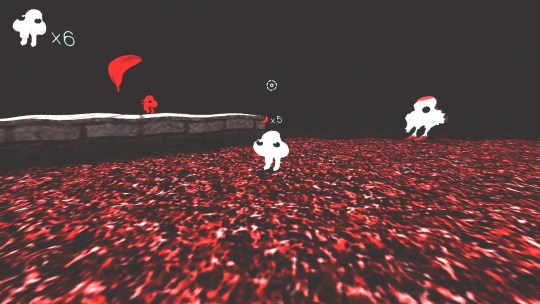
"The Incredibly True Origins of Peeb Adventures" or "Wow! I Hate It!"
Peeb Adventures began as a gift game for my long-time friend Aaron. It was simple, mostly functioning as a fun little gag that stemmed from a 3D model I made of a character he doodled during a drawpile session. I gave Peeb a grapple hook just because I wanted to experiment with swinging mechanics and felt the gag gift was a great space to toy around in without having to actually ask myself how on earth I'd want to structure a game around a grappling hook. Foreshadowing!
Eventually, the gag gift did that classic thing all developers have experienced before where your game spirals out of control and grows into a hideous monster, and what started as a fairly abstract grappling toy convergently evolved into that dreaded state we call a "3D Mascot Platformer."
I made a very short demo in the summer of 2020. It went absolutely nowhere, and after an idol of mine caught wind and asked to play it (before sending about 3 paragraphs of feedback suggesting how to improve what was, in my view, a trainwreck of baby blocks stacked on top of eachother), I shelved the project.
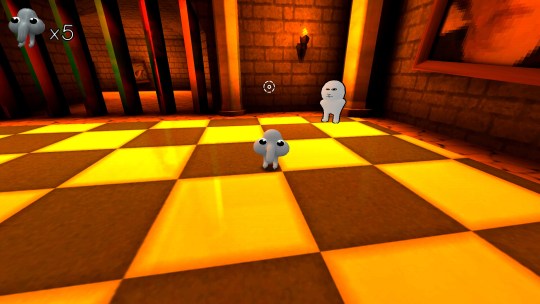
"The Absolutely Tremendulous HPS1 Adventure of Peeb" or "My Friend Jam Suggested I Revive the Project and So I Did"
Shortly after Peeb was shelved for the first time, I joined a community of game developers called Haunted PS1. For those not in the know, HPS1 was essentially the nexus point for "retro horror games" in the indie sphere, and a lot of the resulting deluge (non-perjorative) on itch.io can find its roots in this community.
HPS1 was a good place. Lots of nice, talented people willing to tolerate the kind of mindless riffing I often do in voice calls, anyway. I made a decent chunk of friends there, some of which I'm still quite close to, even today.
HPS1 has this tradition called the HPS1 Demo Disc that began in 2020, and with the year coming to its end, there was talk of a new one set to arrive in spring 2021.
Unlike the first demodisc, however, 2021's disc required you to submit a game in-progress to a panel of judges. They'd then give their yay-or-nay, and you were either in or out.
One day, I was musing over the fact that I didn't really have anything to submit so I would likely have to sit out of 2021's disc. My friend, Jam, who you might know as the developer of the Heilwald Loophole (or Beton Brutal) suggested I consider reviving Peeb Adventures as my submission to the demo disc.
Why did I follow through on this? I don't know. It's funny to think a scenario this simple was the launch point for my career.
Over the next 6 months, I worked on turning the absolutely horrendous gag game into... Something still kinda trite but at least playable. I had some help from my longtime teammate drurylain, my longtime friend Aaron (the creator of Peeb's original design), and my longtime spiritual uncle Tim, and with our powers combined... A new kind of demo experience where you don't do anything of particular note besides swinging around was born.
Also quite important: the very same drawpile session that spawned Peeb also spawned Orbo, who would also make his own appearance in Peeb Adventures as a recurring side character (since I felt like Peeb needed a friend).
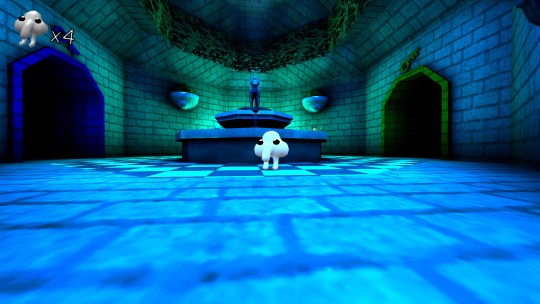
"Go! Incredible Friendship Unites in the Gameosphere! Peeb and Orbo are Born!" or "Peeb Adventures: Coming Never"
So the demo for Peeb Adventures was finished early March 2021, and the demo disc went live on itch.io on the 25th of the month.
The demo disc then proceeded to do a backflip and pick up a LOT of traction online. Which then meant Peeb itself was catching little bits of the traction in its mouth and smacking its lips.
I went from "guy who makes games for nobody" to "guy who makes games for that one very specific brand of teen on twitter who loves the object head show", and I was riding high.
Fanart poured in. People showed a lot of love. I was dazzled by it all, really.
Despite the love for the game and the potential on hand, progress was stagnant. My group of friends and I all got together in a google doc and wrote an entire planning bible for the game. Game mechanics, story beats, twists and turns, the whole thing. Despite having the structure lined up, I had other ambitions and began working on a multiplayer deathmatch game that quickly overtook my work schedule.
Peeb sat on the backburner, but at the time I still wanted to finish it one day. My main excuse was "well, I just need more money! If I'm going to work on this game it's gonna need more than one fulltime person and I can't just ask people to work for free!" That excuse worked on me for a while.
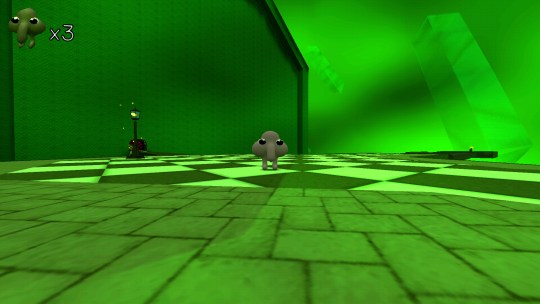
"I Don't Think I Want to Play With You Anymore Peeb!" or "There's Such a Thing as Too Much Love"
A while had passed at this point. My ambitions hadn't just grown, they'd completely shifted. Before long, I found myself working on yet another demo for the 2022 HPS1 Demo Disc, "The Spectral Mall."
Nowhere, MI wasn't just some random toy for me, but the culmination of all my love into one game. Despite its silly demeanor, the game was a product of a lot of pain, and even now I still desperately want to finish it. Except I have to make money to live, so... Oops!
Anyhow, there was a shift in demeanor for me during 2022. You have Peeb, a game that I made on a whim as kind of a joke with friends, and you have Nowhere, MI, a game that meant the world to me during really dark times.
And you know what? There were a lot of people that wanted Peeb. People that never stopped asking me about it.
I realized while working on Nowhere that I didn't really know what I would even do if I ever had the chance to work on the full Peeb Adventures. Not only did I find the nagging kind of annoying, Peeb was also something I couldn't really... Wrap my head around?
It occurred to me that Peeb wasn't really "my" game anymore, it was "his" game. The old Johnny.
I'd changed a lot since the game had come out in early 2021. In a year and a half my world got flipped upside down, and... I don't know, Nowhere was way more reflective of who I was now. Sure the humor was still pretty asinine, but there was a shift. It was hard to picture the "Peeb Adventures" people were actually looking forward to when my own sensibilities had drifted so far.
When the Nowhere demo came out along with Spectral Mall, it did... Alright? People liked it, but it wasn't the same as Peeb's release. Hell, even in Nowhere's release there were people pushing it aside to ask the same question they'd been asking every week leading up to it. "When is Peeb Adventures coming out?"

"Goodbye Peeb!"
It was increasingly harder and harder to not look back at Peeb and kind of hate it. It was rough in every respect, and yet it whenever I met people who'd heard of me online, they always cited Peeb Adventures.
Strangers continue to ask me when it's coming out. On rare occasion I'll get someone asking about Nowhere and I'll feel a bit excited anyone else cares about that game besides me and maybe my friends, but most of the time people just ask about Peeb.
To finally answer this question I've been asked for nearly 4 years: There will probably never be a Peeb Adventures.

"Goodbye Johnny."
I like to believe one of the reasons people are attracted to my body of work is because I make games to reach out to other people. That's probably not the real reason, but it's nice to play pretend and imagine your work has more significance than just "ha ha boner."
I put a lot of myself in my games and I rarely hold back, even if an idea is insanely stupid or strange. The result usually becomes something more like a scrapbook than a game.
It's hard to try and expand on a game like Peeb when the Johnny who made it isn't really with us anymore. If I worked on Peeb now, you'd get some kind of irregular frankenstein that'd never be as exciting as the original vision was.
By the time I get around to Nowhere again, am I still going to be this Johnny? Or will the next Johnny look back at Nowhere the same way I look at Peeb now? Who knows.
Anyway, look forward to more games from me and my friends. Even if it's not Peeb Adventures, it'll still be us.
261 notes
·
View notes
Text
Oh I almost forgot it's Sunday.... And the start of a new month... and it's been 6 months since Jan... I'll do the whole 6month check in later this week... Welps a small one for now!

Because work and other stuff, progress has slowed a bit. MelS is on the last investigation part. And I should be starting the first round of edits next week. Time willing, we maaaaayyyy be looking at a end of July/start of August release???? MelS free time is super limited unfortunately. He tried to add words when he can....

Not a template... BUT AN ACTUAL SUGARCUBE GUIDE!
Making its premiere debut, 85% complete... the Twine SugarCube Guide, covering from the basics of the basics to start out with the format, to ALL the macros, some customisation, and more advanced stuff.
Get your guide today!!!!
Did you know I've been pretty much working on it only for the past... three weeks or so?

My final entry for the Neo Twiny Jam: Clarence Street 14. Completed in 3hs (and I had dinner in between). It's pretty ugly, and the story is not much brighter...
I wasn't thinking much when I wrote it. It came pretty much by itself while I was struggling to create a 500-only parser for the jam (next year!).

An Eggcelent Preparation ranked 6th at the Text-Adventure Literacy Jam. While it is in the bottom-half of the ranking, I received an overall of 3.510/5 (or 7/10 ~with 17 votes), which is crazy high for a ranked jam! Lots of really good entry indeed!! Very tough competition, with mainly experienced creators!
And for a first proper parser try, I'm pretty happy with myself. I received 2 glowing reviews as well! This is a proper win, right there!
I'm going to do a post-mortem to wrap up this project, sometimes this month....
NOTE: the game page of the English version might disappear, in preference to the French/OG one (which I need to update). I will notify it here as well, but just in case, here's a head's up!

A few hours left for latecomers to submit to the Neo Twiny Jam..
And then I will be wrapping it all up :)
In the meantime, all entries have been played ! and reviewed on @manonamora-if-reviews (it might be in the queue if not posted). I've been so busy this week...
~~~~
Some random stuff:
I need to update my website at one point, I haven't since may, and EDOC doesn't have a page yet (neither are the other jams mentioned....)
I may or may not have sent an intent to participate in the IntroComp to test out an idea that has been floating in my brain for a while. Whether it happens is another story.
You can submit an intent to the Intro Comp (I won't this year, really can't).
Anti-Romance Jam is ending in less than 2 weeks!!!! Get your submissions in!!
A bit less than 2 months to submit to the Orifice Jam as well!
Another non-ranked SFW jam will be popping up soon-ish.
Also another thing this week will be dropping (in relation to jams)
I think that's IT!
~toodles~
6 notes
·
View notes
Note
hi. question. if i have a pet and one day it just dies on me suddenly for seemingly no reason, can i have a vet do a necropsy on the body to figure out what happened? if no, to who else or where else do i go to, to get a necropsy? if yes, how do you bring that body to a clinic? or do you bring a vet to the body?
vet-and-wild here.
Yes, you can have a necropsy done. Not every necropsy gives a perfect 100% answer, but we can generally at least figure out which organ systems were involved. Not every general practitioner does necropsies, but they should be able to at least facilitate transport if needed. If nothing else, universities with a vet school will have a pathology service, or a general practitioner might know another clinic that does them. It's best to call your vet and ask so they can let you know what their clinic specifically recommends.
(Potentially disturbing discussion to follow)
To get the best results, submit the body as soon as possible and keep the body cool, but not frozen. Also keep in mind that small bodies decompose faster than large bodies. Having someone submit a 3 day dead hedgehog and expect easy answers is just not feasible (true story). Freezing can cause artifacts, and also potentially mess up results. It also makes it hard to work with the body. A fresh specimen offers the best chance for results. People often transport the body in boxes, plastic or garbage bags, or wrapped in blankets depending on the size and species. Also keep in mind that it is common for the bowels and bladder to be released post mortem, so be careful.
Depending on where you live it may be easier/cheaper to just take the body right to a pathologist rather than have the general practitioner act as a third party. Sometimes it also just makes sense for the GP to do the necropsy itself but also submit tissue samples to a pathologist so you get a little of both. There is a gross (macroscopic) necropsy, as well as microscopic (histopathology, cytology, bacterial cultures, etc). Depending on the situation and the findings, an owner may just be satisfied with a gross necropsy, or they may benefit from a microscopic evaluation. I can't speak for every facility but on my necropsy rotation we took histopath and culture samples from every specimen (but we might not have actually used them depending on the situation) but in general practice owners don't always way to pay to submit them and just want a gross necropsy to look for a big, obvious lesion.
Large animal vets may do necropsies on farm. People do still submit large specimens to pathologists but it's not out of the realm of reason to have a necropsy done on site depending on the species. For a small animal vet though, we generally don't go to an offsite location for a necropsy.
#potentially disturbing#graphic#potentially graphic#animal death#physiology#necropsy#animal death discussion
121 notes
·
View notes
Text
Why are you cutting up that animal?
OR: What is a necropsy and why do we do it?
So I’ve had a fair few questions recently about pathology and thought it might be helpful to do a few summary posts of the different things we pathologists do. Today I’m going to tell you about the what, how, why, and when of necropsy!
Warning: This post is going to be about dissecting deceased animals. I won’t use any graphic pictures but if the topic upsets you in any way, this may not be the post for you. Ready?
1) What is a necropsy?
Necropsy is the word we use for the post mortem (after death) examination of animals. It’s the equivalent of a human autopsy. Basically we get the body of a dead animal and we follow a specific dissection process aimed at inspecting every organ for abnormalities that may explain why the animal was sick and/or died.
2) How do you do a necropsy?
Everybody has a slightly different technique, but in the end they should reach the same result. This is a quick run down of how I approach it (this is where we’ll get into some discussion of actually dissecting bodies, so skip this if that makes you queasy).
1) External exam: The first step is to look at everything you can see without opening the animal. Same as a physical exam on a live animal, we assess the fur/feathers/scales, skin, eyes, ears, inside the mouth, claws, and so on. This is important because it can start you down the right track as to what you’re going to find inside. For example, a cat that has been hit by a car usually has shredded claws, because they try to grab onto the road at the point of impact. Or if you find blisters in the mouth and between the toes of a pig you might want to quickly get on the phone with the state vet because you suspect foot and mouth disease! We also take note of identifying features of the animal (colour, brands, microchip number, ear tags etc) so that the findings can be matched to the right animal (which can be contentious in insurance or legal cases).
2) Opening the animal: So now I’m ready to start cutting. How you position the animal to start depends a bit on the species, but for your average mammal you’ll lay them on one side. I then get the legs, skin, muscles, and ribs out of the way so that the abdomen and thorax are open for inspection.
3) Stop and look for a minute: Before we take anything out it’s important to take a moment to look at how things are sitting. Are all the organs in the right place? What colour are they? Is there any fluid there shouldn’t be?
4) Examine the organs: Now that we’ve taken note of how things were, we can start taking things out and getting a more detailed look at them. Every organ gets its moment in the spotlight. Tubular organs get opened so we can look at the inside, and parenchymous (solid) organs get sliced into so we can see anything going on in the middle of them. And while we’re doing this, we take a piece of everything. Some things we’ll keep fresh for microbiological or toxicologial testing - lung, liver, spleen, and kidney usually, occasionally brain if it’s indicated - and everything else goes in formalin to preserve it for looking at under the microscope later.
5) Tidying up: After we’ve looked at everything, it’s time to clean up. This depends on what the owner wanted. Animals are often sent off for cremation after this process, but if the owner wants to animal back we can do what is called a “cosmetic necropsy”. When we do this we just get into the animal through one incision along its belly, which we stitch back up when we’re done. Overall, we try to be as respectful as possible, and if you do have concerns about the animal you are submitting for examination, you should talk to your pathologist! We’re happy to answer questions and will try to accommodate your needs during the process.
6) Writing a report: Every necropsy performed should be followed by a report lisitng everything we saw while we did it. This is a legal document which includes everything that was abnormal, everything that was normal, and anything needed to identify the animal.
3) So wait... why are we doing all of this?
For a lot of people, it can be hard to understand why we are still looking into what was wrong with an animal after it has died. And I get that, we’re a bit past the point of helping that animal once it reaches the necropsy floor, so who cares?
Well for one, in a significant number of cases the animal dies without us knowing why, and that makes it hard to find closure. Maybe your pet died suddenly, or it was being treated for something but died anyway. With a necropsy we can either give you a solid answer as to what caused your animal to pass away (maybe there was a tumor you didn’t know about, or a clot) or we can tell you that there’s no evidence of anything that you could have helped or prevented. That knowledge and reassurance can help owners process the death of their animal, and I’ve seen it make a big difference.
Secondly, if there are other animals involved or at risk, we can find out how to help them! This reason is most often applied to production animals where we can figure out herd health problems, but it can apply to pets from a household with other animals as well. If your dog dies from getting into something toxic, it’s good to know that happened so you can remove the poison and possibly save your other dogs from the same fate. Or if there’s an infectious disease moving through your herd of cattle, now you know how to treat or what to vaccinate against. It may be too late for the animal on my table, but that animal might still be able to help the others around it.
Thirdly, that information could help save animals you don’t even know. The information we find at necropsy can educate the vet who was treating it, students present for the examination, and the veterinary community at large. Maybe your animal presented unusually for a known disease, so your vet didn’t recognise what was happening. That’s sad, but vets are human too and can’t know everything. But now that they know what killed your pet, they’ll know to check for that in the next patient with the same presentation. Veterinary students see and participate in necropsy at school so that they can know what lesions look like before going out into practice. The more they can see, the more knowledge they are equipped with before your sick pet is in front of them. And maybe your animal had something wrong with it that nobody knew happened. If we can see that at necropsy we can publish information to teach vets all over the world that this can happen and we need to find out how to fix it.
If you’re still reading, thanks! I hope this has taught you a little something about the necropsy process. If you have any questions do feel free to ask, I love pathology and would like nothing more than to help people understand it and remove some of the suspicion that surrounds what we do. Next week I’ll be doing “What are you looking at down that microscope” OR what is histology and why do we do it? So if there’s anything you want to know about microscopic tissue examination let me know!
#pathology#vet path#veterinary pathology#vet med#vetblr#necropsy#post mortem#autopsy#tw animal death#tw dissection#vet#vet student#vetstudent#vetschool#vet school#pathology saturdays#pathologysaturdays
193 notes
·
View notes
Text

somewhere west of wherever post mortem below the cut!
the good
pacing!
i think i finally figured out how to pace, in that, it’s all practice. i don’t think there’s anything specific i can work on other than writing a lot and slowly getting a feel for where something is moving too quickly or dragging. i know having someone beta looking specifically for that would also help, and i think i might try that in the future when i feel less scared about sharing things before they’re “done” haha
characterization (specifically dialogue)!
i liked my dialogue in this one, i think i cold have gone a little further with dylan, but one thing i did that was fun is choose their filler words and pauses, so in this case i took from interviews that patty uses “um” while dylan uses “uh,” patty doesn’t always say the full word while dylan does pronounce his words clearly, even if he speaks too fast to really understand sometimes, so then i let dylan talk a bit more than i would most other characters, while pat would always elect to say as little as possible unless he felt it necessary i don’t know if any of that is too miniscule a detail to help, but i like that it’s in there.
also i’ve always wanted to write patty calling someone a bitch and it felt right that the someone was connor mcdavid lol
the struggle bus
ends of scenes!
its always been easier for me to begin a scene than to end it, and i think for this one i had “how does this end??” written at the end of every scene the first round through. i know a part of it is perfectionism, so one thing i tried was that if i felt it was fine as-is and never really wanted to come back to it, i left it and i ended up keeping those endings for two scenes. it was nice not to write a bunch only to end up changing my mind and deleting it later and it saved me a lot of time so i think i’m going to keep doing that in the future.
uh, general plotting??
i scrapped about 3k early on in the process (that ended up over 4k by the end) because i originally was writing dylan’s girlfriend and kid into it before i realized it would take me more words than i was capable of in the amount of time we had to do justice to what i had in mind. i know i made the right choice but rip to the scene in which patty puts dylan’s kid to bed it was real cute
i also think this might be a positive too in that it was annoying to scrap that much, but i did it early enough that i had time to rework the rest of what i had and try something different! i think sometimes i get too rigidly attached to an outline and don’t want to stray from it, so this was good practice in flexibility.
i also scrapped an opening scene i thought was superfluous, and added an entire section of like a page and a half in the middle approximately a day before i submitted it? i think my process on this one reflected the chaos of my life at the moment, but again, i’m not sure it was all bad. even though the story i ended up with was a whole lot different than the one i set out to write, i’m really glad i stuck with it and turned it into something new.
for next time
i said last time that i wanted to do some deconstruction of other fics for certain things like pacing, but i never did whoops. so this time i have a few fics in mind i want to look at in detail for creating an atmospheric setting and also how to build tension so maybe i can write an actual plot!
#somewhere west of wherever#patty/dylan#sunday writing update#i also wrote [redacted] words#of my hbb#i know i started a good one because i cannot stop thinking about it
12 notes
·
View notes
Text
3x21 Chapter Fifty-Six: The Dark Secret of Harvest House
Hi.
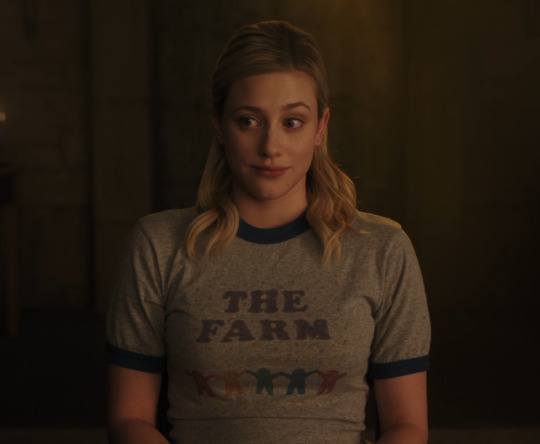
Betty has come inside, and is living under the protection of the Farm, since the Black Hood is once again at large.
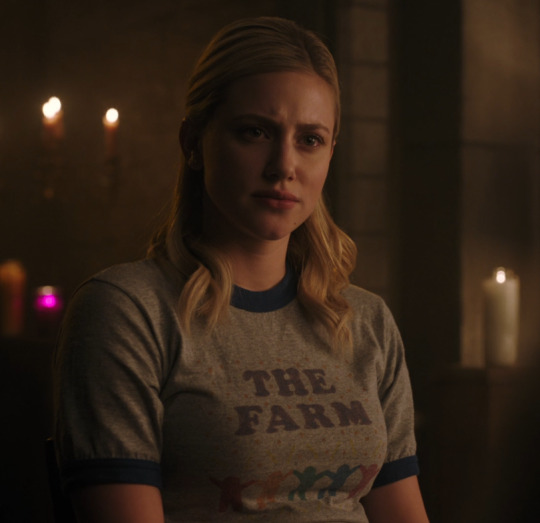
There are no ponytails in this episode, and we open with Betty in this (fucking dope, up there with the RHS wrestling shirt) Farm ringer t-shirt. She’s trying to play nice; but true to Betty-form, she’s keeping her ear to the ground and trying to figure out what’s up. She’s Betty Snoopering.
Now that Betty is in Farm-control (sort of), they gang up to stage an...intervention.
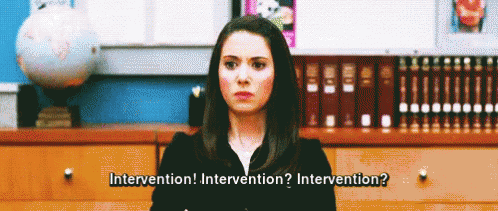
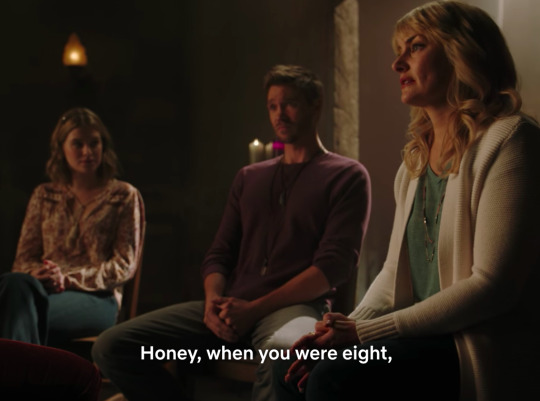
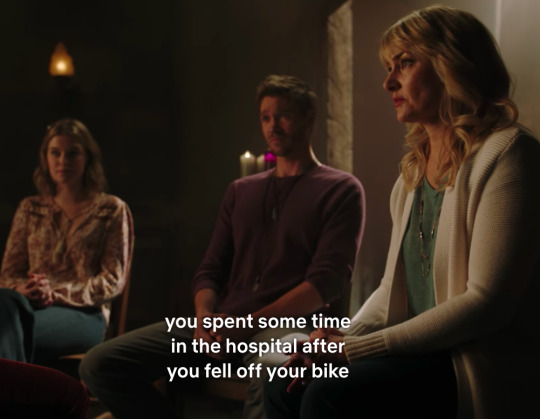
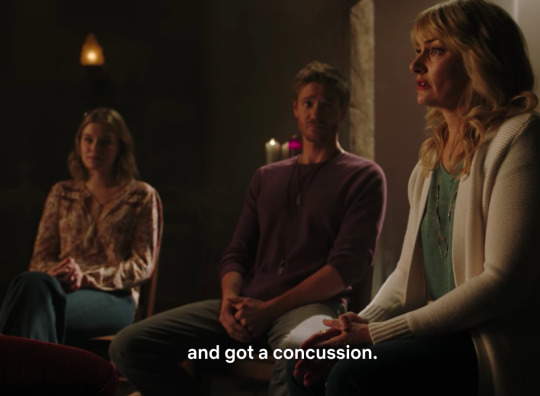
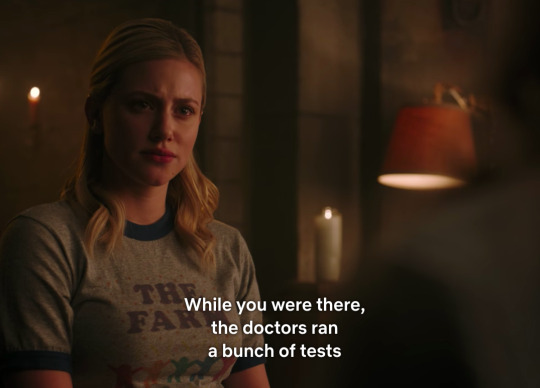
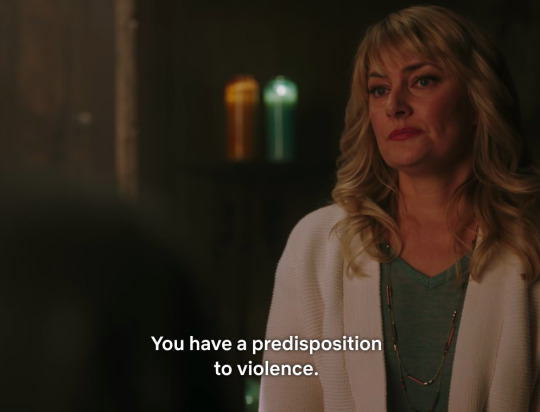
Ah, The ‘serial killer genes.’
I think this is perhaps where the season 3’s occasional reference to Betty’s failure to remember childhood events (see 301 and 315, and this episode’s reference to Caramel the cat) was leading to—a childhood injury, and perhaps even a traumatic brain injury (TBI).
TBIs have been most prevalent in recent cultural conversation around sport, as a history of repetitive brain trauma & concussion in sports can lead to CTE (chronic traumatic encephalopathy). CTE can only be diagnosed post-mortem, but amongst many many other symptoms that present in individuals with CTE, there is indeed memory loss.
Many people have speculated about violence & CTE, notably in instances of former/current American football players who commit family/intimate partner violence or even murder. But there’s no certainty around causation versus correlation. Men who commit family/intimate partner violence against women are also often misogynists, and there’s absolutely reason to think this has just as much consequence in their actions as a history of TBI would.
A lot of serial killers have a history of childhood TBI, and a lot of serial killers are raging misogynists—but you know what, there are also millions of other people who have and are both these things, and don’t go around killing people.
Betty may have what Riverdale calls ‘serial killer genes,’ (but which popular science casually calls ‘warrior genes’) MAOA and CDH13, but as literally any geneticist will tell you—genetics are not destiny. Even Edgar acknowledges this; but as Edgar is wont to do, he twists it to serve his purposes.
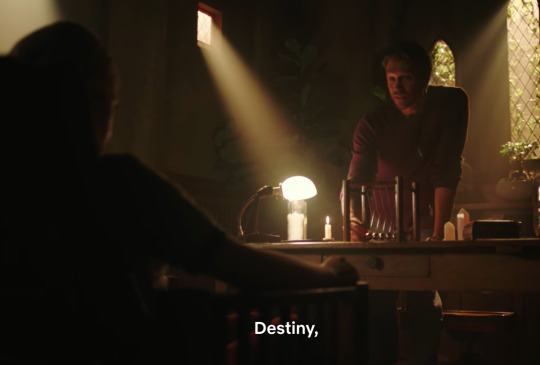
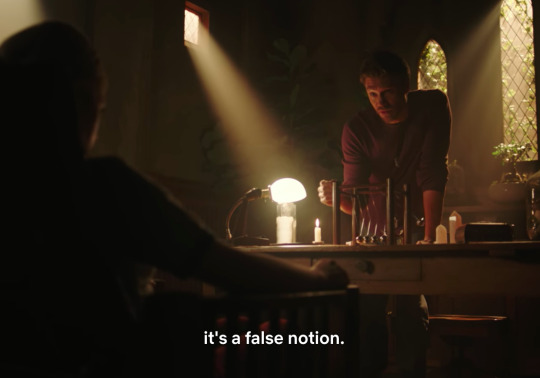
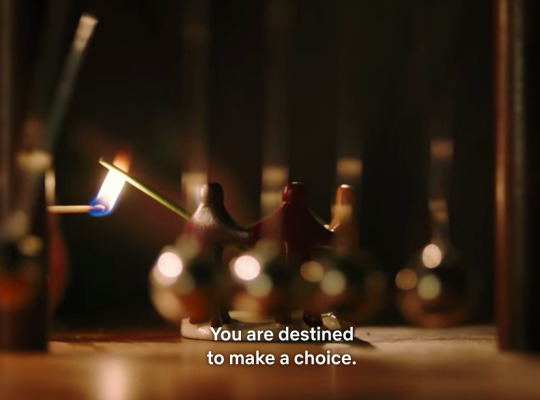
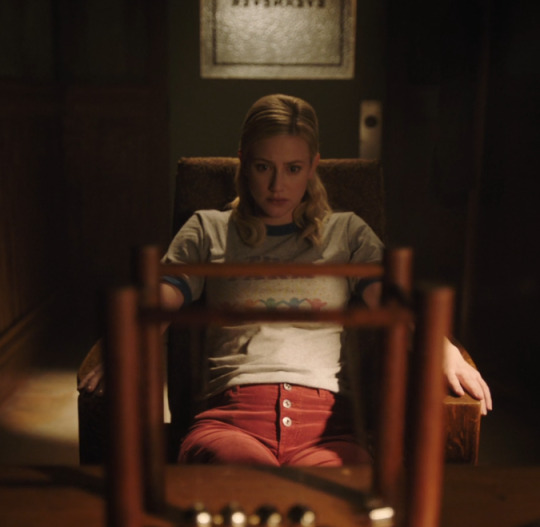
Betty might have worn these trousers at the end of 311; hard to be certain. As it is, they’re a departure! Straight-leg burgundy velvet crops with an exposed button-fly, worn with this aforementioned Farm t-shirt and some Chucks (her pink low-tops, I’m I’m not mistaken.)
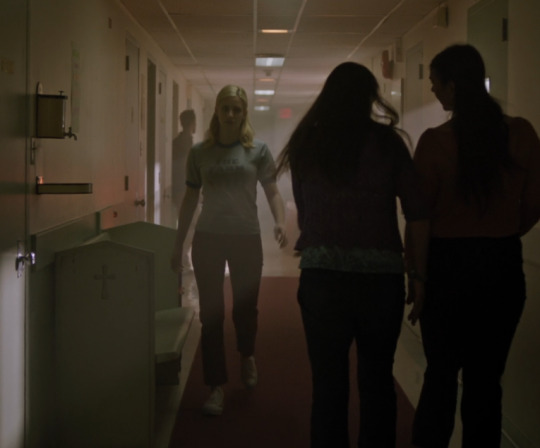
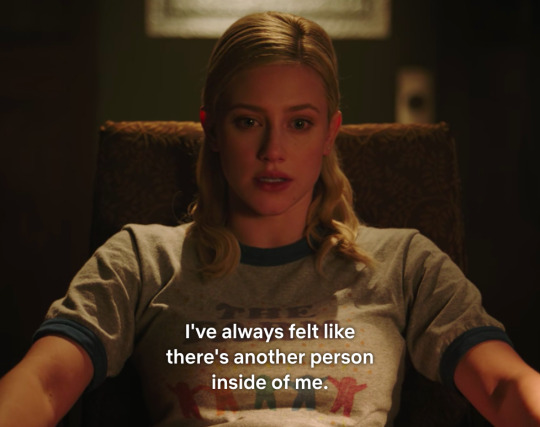
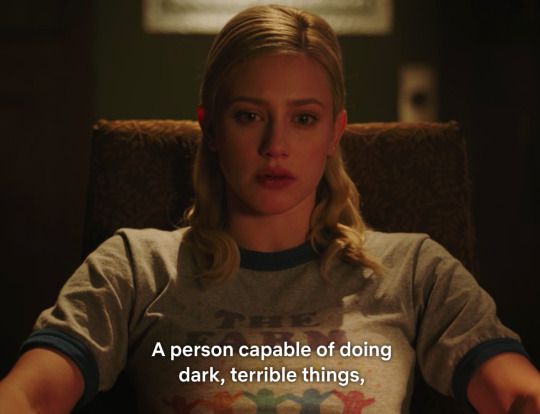
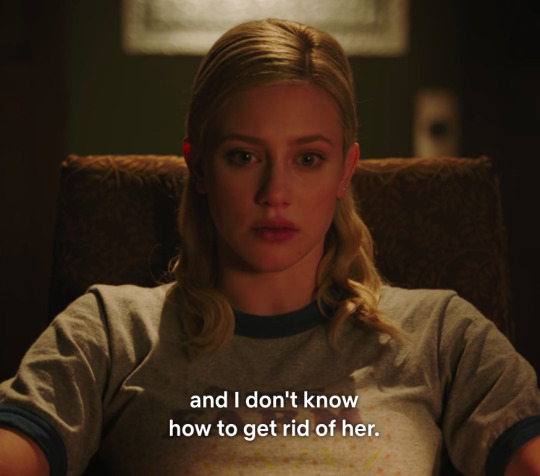
Betty!!! You are not your thoughts!! We’ve talked about this.
Or—at least I thought we had. But I’ve looked back through the archive, and it appears I cut it out of an earlier post. Que sera.
One may be walking over a bridge and think, what would happen if I threw my laptop over this railing? (as indeed I myself thought pretty much twice a day for like a year), but that thought has literally no power if it’s not acted upon.
Intrusive thoughts are endemic, but they’re not defining unless you turn them into action. You are defined by your action. Betty is a person who has obviously-if-abstractly dealt with matters of personal mental health; she’s struggled with familial and societal expectations of her and how those abut and perhaps contradict her personal desires. To then interpret this as being of two minds? It makes sense.
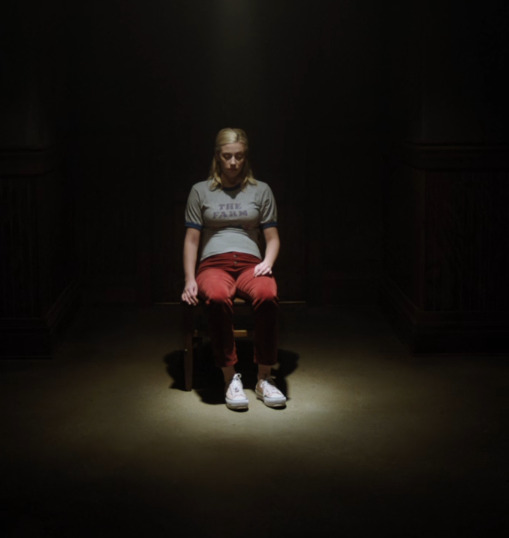
And it sets up nicely a situation in which Betty is hypnotized and convinced she is conversing with her ulterior/interior/submerged/other self. Maybe her id? Idk—Freud is outdated and has more prevalence in casual conversation around psychology than in the actual practice of it, or so I understand.
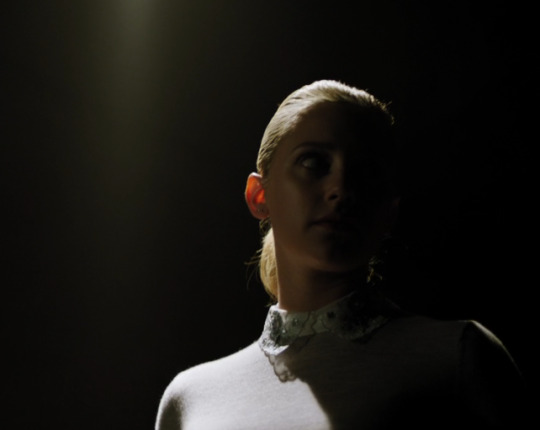
Now—Id-Betty (which is what I shall call her for lack of better options) wears an outfit Betty donned verbatim in 213. It’s the outfit Betty wore when she was trying to outwardly maintain her chill—after she and her mother had disposed of the Shady Man’s body, and in a moment where she was trying to keep composed and assure the outside world that everything was Very Normal, Thank You Very Much. It’s Peak Betty.

So that Id-Betty dons this look? Makes sense to me. Id-Betty (aka Polly in Betty Drag) is attempting to break Betty on behalf of the Farm. Broken people are easier to get on-board with cult activity.
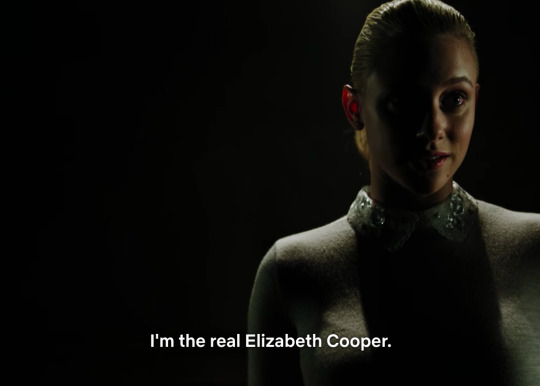
But true to form, Betty proves hard to break.
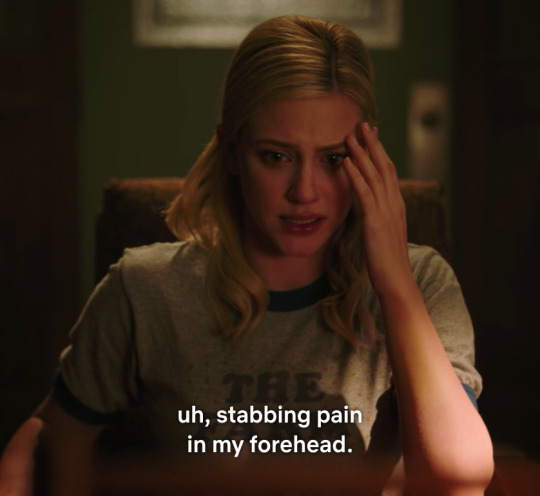
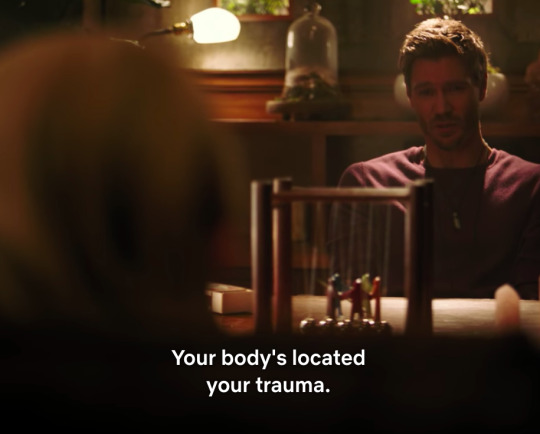
The Farm’s argument is that Edgar is able to convert emotional pain into physical pain, which then can be surgically excised from the body (but as we shall see, is just an excuse to put people under anesthetic in order to steal their organs Riverdale fucking went there!!!!) Betty gets a headache during her hypnosis session—thus setting up Edgar’s attempt at lobotomizing her. More on that in a bit.
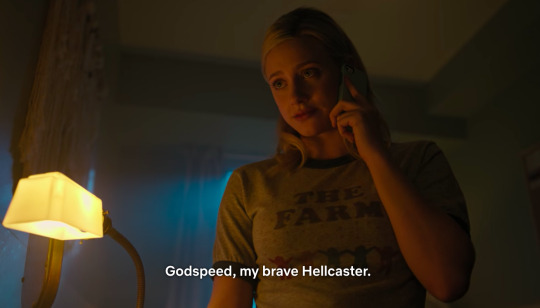
I told you there was a vibe.
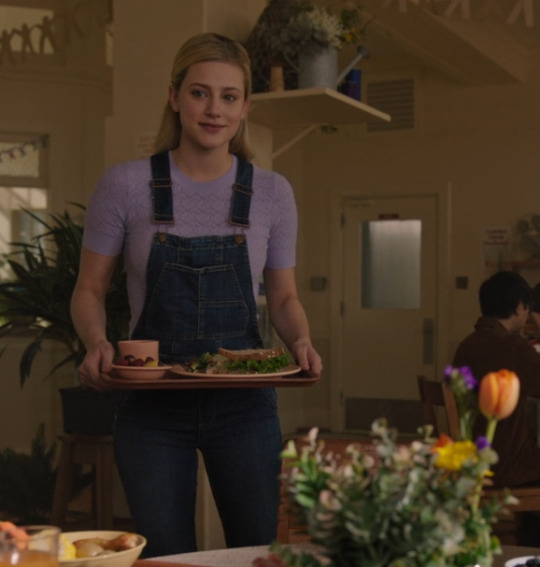
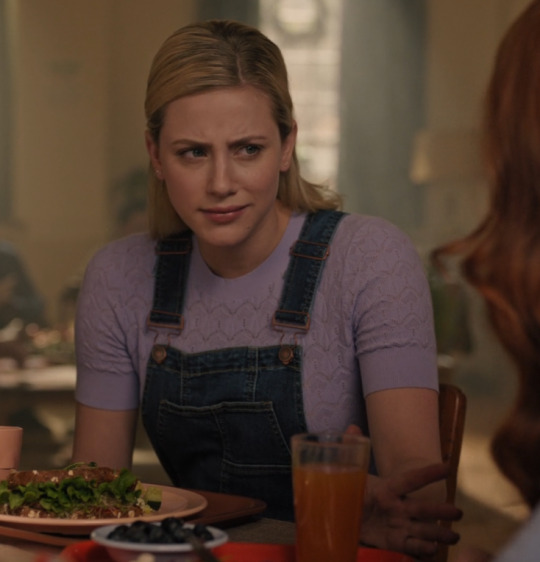
Well this is fly as fuck, right? The flared overalls? The purple sweater? It’s all great. Worn with those platform pink Chucks.
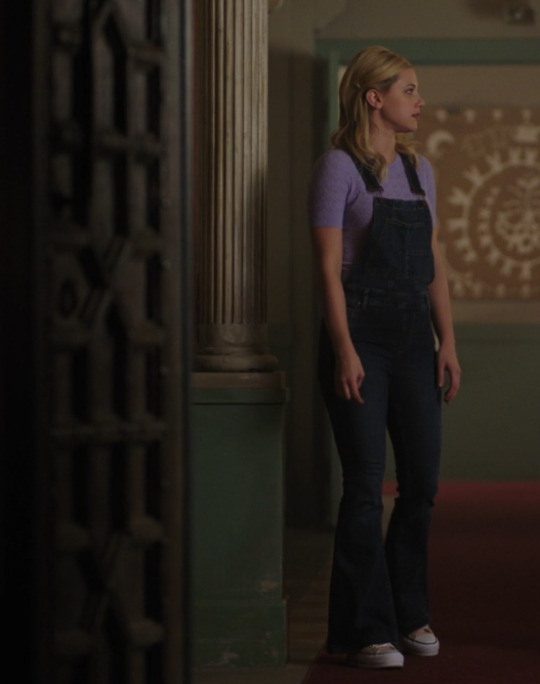
Overalls are kind of apropos in the moment, as it could be argued Betty first really began her investigation into the Farm in 303—wearing overalls.
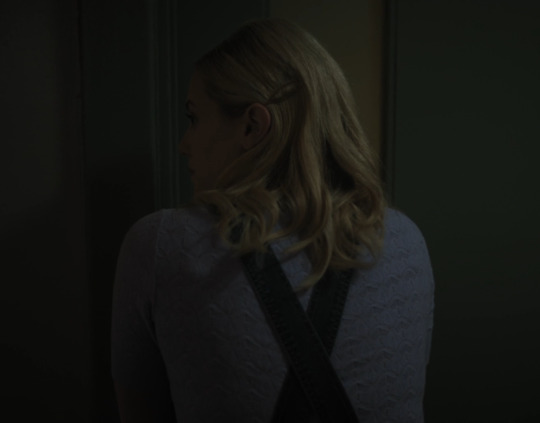
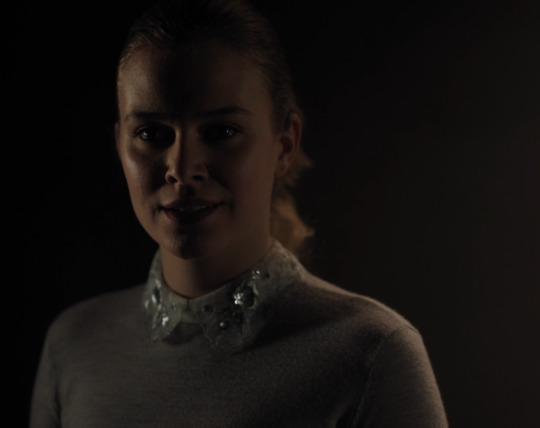
The reveal!!!! Polly uses her personal history with Betty to really sell the con.
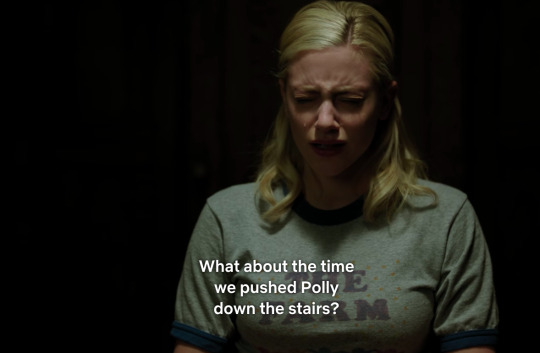
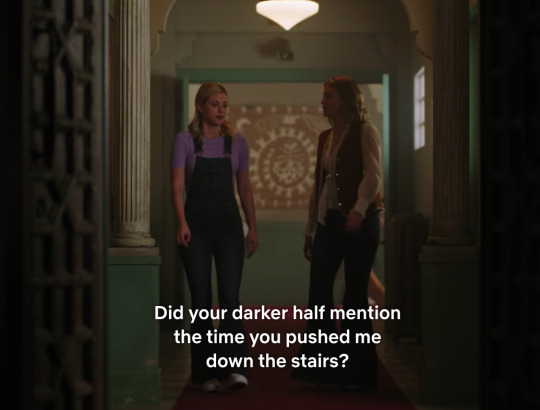
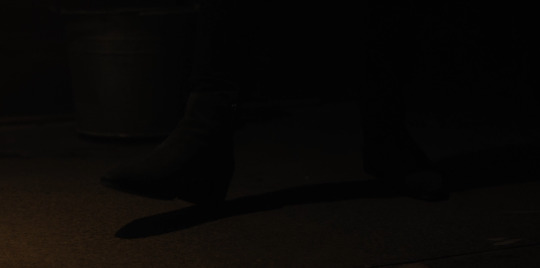
(Even the boots are on point.)
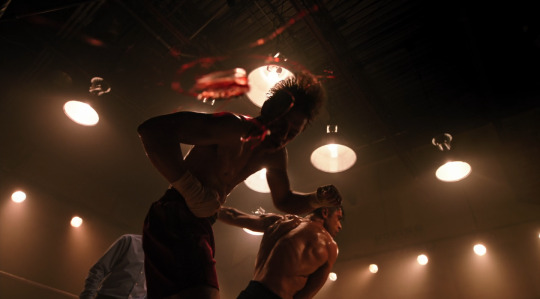
Not relevant to our plot-line, but this fight sequence is shot so fucking well. Admittedly I’m only usually half paying attention to any giving boxing scene, but this moment!! Kudos to Mr. Seidenglanz & the team for really nailing it.
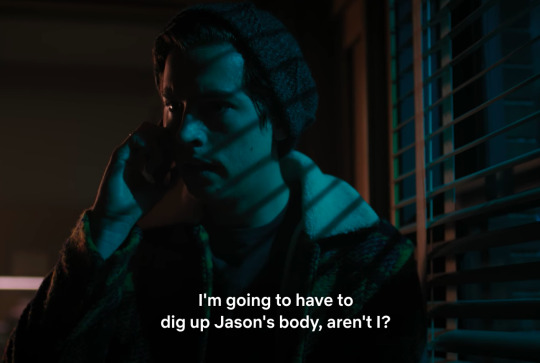
Riverdale.
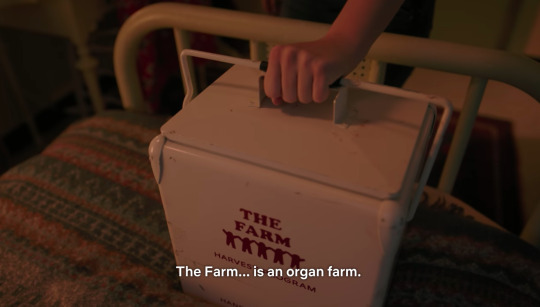
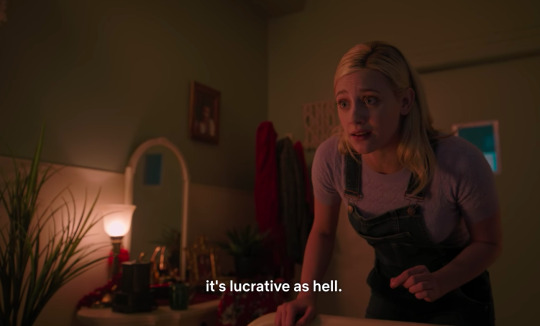
Oh I bet.
Betty tries to get her friends out, and well...they’re converts, they literally drag her back into danger.
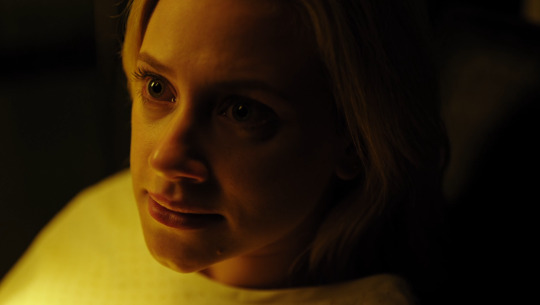
There’s a...lengthy history of people—and arguably of women, specifically, given the status and relative lack of autonomy women held during the years lobotomies were an accepted medical treatment, ie, the mid-20th century—subjected to lobotomy for variety of reasons: history of depression, anxiety, homosexuality, arthritis, talking back or misbehaving, schizophrenia, being prone to seizures, OCD, suicidal ideation, etc etc etc. In essence, it was often an attempt to instill conformity on a ‘difficult’ of ‘deviant’ individual.
A lobotomy very often left people incapacitated in one way or another for the rest of their lives. It’s objectively horrifying.
What’s more, brains aren’t transplantable (at least in this world. Riverdale is Riverdale so who fckn knows.) Edgar’s lobotomizing Betty to placate her, to domesticate her, to get her to stop causing trouble, to submit.

We know Riverdale isn’t going to actually lobotomize its star-player (the production team knows what it has in Ms. Reinhart, who is either the White Michelle Williams or Blake Lively of this show—which, tbd; I’m rooting for the Michelle route bc she has the range), but still—it’s up there in the pantheon of disturbing shit Riverdale throws at us on a normal Wednesday evening.
Summary: two outfits, plus one that Polly wears while pretending to be Betty, and one hospital gown
I Own This: W h e r e can I be getting a Farm t-shirt please and thanks
Key necklace appearances / Is Betty a River Vixen?? / That backpack?: no
The floggingink Memorial Peter Pan Collar Count: We have one very consequential peter pan collar!!!
Best outfit: purple sweater and flared overalls
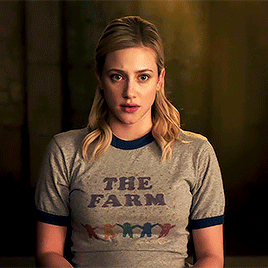
#3x21#s3#riverdale#betty cooper outfit watch#betty cooper#long post#cw abuse#cw medical procedures#cw kidnapping#cw hospitalisation#cw mental health#lotta cws here let me know if there are ones i have missed pls
56 notes
·
View notes
Link
TITLE: Post mortem viventem
CHAPTER TITLE: TWO: If it happened twice, it'll happen three times.
WARNINGS AND RATINGS: Rated T for swearing, major character death and suicide
FANDOMS: Detroit: Become Human
SUMMARY: So, if androids don't have souls, why does Connor see the ghosts of shut down Deviants? Why does he see ghosts in general? (In which Connor sees more than he is meant to, and it changes less than you think.)
Sitting on Connor’s borrowed desk, Daniel began to nickname every person in the police station while Henry politely listened, and Cole gave his own interjections, and Connor half tuned in, scanning the deviancy cases on the terminal.
“See, that man,” Daniel says, pointing to who Connor identified as Todd Williams, “Is Stink-man. He’s Stink-man because he looks like he takes drugs and doesn’t shower. Gavin Reed over there? He’s I-repress-my-issues-by-being-a-horrible-human-being. He’s called that because he is a horrible person, so logic dictates that he has a sad anime backstory.”
Cole then points at Captain Fowler and says “That’s I’m-always-angry-because-Hank’s-disciplinary-file-is-a-book-but-I-can’t-legally-sell-it-as-one.”
“Why is that, Cole?” Henry asks.
“Because Dad’s disciplinary file really is a book.”
Connor then gets up, walks over to Hank’s table, and asks him about the case, and Hank get’s angry enough to shove him against the wall, prompting a whimper from Henry, a “Whoa what?” from Daniel and a “Dad no!” from Cole.
Then a police officer comes, tells them about a deviant and a small girl being sighted in the Ravendale district. The same ones from the report that was submitted by Todd “Stink-man” Williams that morning.
Daniel sighs, hooks an arm around Henry and says “Well, Henry my boy, you’re gonna learn how to investigate by talking to ghosts, are you ready?”
“Don’t corrupt him Daniel.” Connor mutters, walking past them to Hank’s car.
“I do what I want Connor!” Daniel yells at him, dragging Henry by the arm.
-LINE BREAK-
Turns out the Ravendale District Lead was a huge waste of time because the deviant and the small child are long gone, which irritates Daniel because now he can’t corrupt teach Henry anything and frustrates Cole because nothing cool happened. Henry, for all intents and purposes, seems pretty chill about it, and that just makes Daniel even more irritated.
So here they are. Under a small umbrella in front of a food truck named “Chicken Feed”. Hank eating a burger that is about 5 sticks of butter in terms of calories, Connor asking and answering questions, Daniel pouting, Henry standing awkwardly to the side and Cole chasing after cats, who damn well knows something is there and hiss whenever he comes too close.
“Is there anything you would like to know about me?” Connor asks, cocking his head to the side.
“Nah, not really.” Hank replies, chewing on his burger. “Actually, on second thought, yeah. Why they make you so goofy looking and give you that weird voice?”
Connor blinks, and answers with “CyberLife androids are designed to work harmoniously with humans. Both my appearance and voice, are specifically designed to integrate into any social situation.”
Hank considers for a moment, and then says in a flat sort of voice, “Well, they fucked up.”
Daniel starts laughing, leaning onto Henry for support. “Oh boy! That’s a good one, and it’s true!”
Henry mutters “That’s not very nice Daniel…” which Daniel dismisses with a wave of his translucent hand.
“It’s okay if it’s funny, you need to remember that.”
“It’s really not…”
Connor LED blinks yellow for a couple of minutes, and then he says “We got a lead…perhaps we can go check it out. I’ll leave you to your meal Lieutenant.”
And then Connor goes back to the car, not sparing a glance at the ghosts, Daniel following after him, yelling “Wait are you mad at me? Don’t be please it was a joke I swear!” and Henry silently trailing behind them.
It’s raining that day, but the sky will clear up soon.
-LINE BREAK-
The apartment is filled with pigeons. Hank Anderson and Cole Anderson are scared of pigeons. Someone has been here, evident by the very encrypted journal found in a hole in the wall, and by balancing Daniel on Henry’s shoulders, they find the deviant in the ceiling, and Daniel yells “Connor! C’mere for a minute and look up, I just want to make sure what I’m seeing is right”
Connor comes, stands on the seat and looks up. The Deviant jumps down a moment later, knocking Connor to the ground. The group stands still for a minute while the deviant runs off, followed by Hank yelling at him to go after it, and Connor skids out the door in pursuit.
Daniel groans, and runs after him, Henry on his heels. Cole stays with his dad, and the three of them run after the deviant, even if it only thinks Connor and Hank are chasing it.
-LINE BREAK-
Connor bursts out of a corn field, to see the deviant having a brief scuffle with Hank on the roof top, before pushing him off the roof top. Connor can feel time slow as he gauges his options.
Then a sense of irrationality, a push, a shove makes him grab Hank’s hand and pull him up, while Daniel yells “I’ll get it!”, which roughly translates to “I’ll get it, but I’m going to fuck up somewhere and it’s not going to end well for anyone.” and runs after the deviant with Henry in tow, who look like he rather be anywhere than here. Cole breathes a sigh of relief when his father is saved from falling.
Connor and Hank are silent for a moment, before a loud “OH FUCK!” was heard, followed by a “That’s not supposed to happen.” from Daniel and a “Oh no, I’m sorry!” from Henry.
Then the sound of plastic and metal hitting concrete at a high velocity and there’s a couple of minutes of silence, followed by a very loud “ARE YOU FUCKING KIDDING ME?”
Connor turns to the next roof top, goes down past the garden beds and walks to see Daniel and Henry peering over the edge of the roof, looking mildly disgusted and disappointed in Daniel’s case, or slightly guilty in Henry’s case.
“So, uh, we caught up with him. Henry slipped and ended up pushing him forward. I guess our Deviant also slipped because he managed to regain footing but this is glass so he skidded a bit and toppled over the edge and now he’s…uh…” Daniel trails off, looking back over the edge of the roof, a translucent hand pointing to the carnage below.
Connor peers over the edge, to see the ghost of their Deviant sitting on the floor next to its body, swearing up a storm. Hank comes jogging by next, peers down and goes “Fucking Androids.”
Hank does not see the ghost screaming out “WHAT THE FUCK. HOW THE FUCK. THIS IS FUCKING BULLSHIT!”
Daniel mutters “Oh I see, he can swear but I can’t? That’s broken.”
-LINE BREAK-
The deviant’s name is Rupert, and he’s still very salty about how he died.
“I can’t fucking believe that get killed because I slipped. That’s broken.” He complains, throwing his arms up into the air. “That’s just fucking stupid.”
Daniel nods every once in a while, saying “I understand what you mean.” And “Mm, I agree.”, not actually listening to Rupert. Rupert has also made the choice to haunt Connor, until Henry goes “Connor can see us, you know…”
Rupert swears, and sticks around anyway. Might as well stay around. This irritates Daniel because now there are three ghosts following Connor even though he was first.
Connor hasn’t said anything, still trying to figure out why he saved Hank from falling instead of accomplishing the mission, despite Hank’s rate of survival being 89%.
Why did he do it?
-LINE BREAK-
It is a generally accepted fact that androids do not have souls. They don’t have them, because they are machines designed to accomplish a task. They aren’t alive, they don’t feel emotions or pain.
But Connor see’s the ghosts of deviated androids, he sees the spirts of them alongside the human ones.
Does that mean they are alive? That they have souls?
Can an android have the ability to become alive? After all, there is living-dead proof before his eyes.
Connor doesn’t know and feels the instability in his software begin to rise.
-LINE BREAK-
Hank won’t answer the damn door.
It’s beginning to piss both Rupert and Daniel off. Cole can’t open the door, which means Connor, who is corporeal and therefore cannot go through walls, has to walk in the rain to find a way in.
“Dad’s asleep on the floor again…” Cole says, avoiding eye contact. “He was drinking the weird stuff and playing the game with his revolver again.”
That sends alarm bells ringing in Connor’s head, and he breaks a window and tries (Emphasis on “tries”) to jump in through the window and lands ungracefully onto the floor, and immediately a large Saint Bernard begins growling at him.
“E-easy…uh…” Connor begins, putting a hand up as he racks his memory for the dog’s name. “S-Sumo! I’m a friend, see? No need to worry, I’m just here to save you owner, that all…”
Sumo huffs, before walking to his dog bowl, and that’s when Daniel, Rupert and Henry decide to appear, phasing through the door.
Connor glares at the three of them, saying “You bastards. You could have helped.”
Henry and Daniel exchange glances for a moment then say “But you like dogs.”
Connor blinks at them and shrugs off the comment (As machines do) and walked over to Hank, who was blissfully unaware of the whole interaction by being unconscious on the floor, a result from downing half a bottle of whiskey that has now spilt all over the floor.
“What a waste of good alcohol.” Daniel mutters, staring at the brown puddle on the floor.
“You can’t even drink.” Says Rupert, glancing at Daniel.
“Guys, not now, please.” Henry pleads, hoping nothing expensive was going to break now.
“Is dad okay?” Cole asks Connor, peering at him with translucent blue eyes. He’s kneeling next to his father, and Connor realises why Hank tries and kill himself little by little.
“Cole, how…how did you die?” Connor asks, staring at Cole’s ghostly form. Cole looks at Connor for a moment, and replies “You don’t know?”
Daniel and Rupert stop their sniping to watch, and Henry is already kneeling down next to Cole, who’s beginning to tremble ever so slightly.
“There was-was a truck. It couldn’t stop and it slammed into dad’s car and I remember being in surgery and there was an android and they couldn’t do anything and I-I-I just woke up again out side of my body and dad was crying and I…I…” Cole manages out, before grabbing Henry by the shirt and crying into his shoulder. “Ever since then, dad keeps drinking the stuff he keeps in the cupboard and playing with his gun and I try to stop him but I can’t.”
Connor sits back, and he says “I’m sorry.”
Cole wipes away the tears with the back of his hand and says “I’m okay. Let’s wake dad up, okay?”
Connor nods, and pats Hank’s cheek. “Lieutenant?”
Hank groans and moves his head just a bit.
Connor raises his hand up, and slaps Hank hard in the face. “Wake up Lieutenant! It’s me, Connor!” Connor yells, and picks up Hank, supporting him. “I’m going to sober you up for your own safety.”
Hank lets out a loud “Hey, leave me alone you fucking android!” which Connor ignores, and says “I have to warn you, this may feel unpleasant.”
Hank squints at Connor for a moment and says “Get the fuck out of my house!”
Connor ignores that too, dragging Hank to the bathroom, apologising every so often.
Henry decides to go and help , seeing as he has had experience with sobering up his own owner sometimes, and Cole only hiccups a bit and follows.
There’s the sound of a shower head being turned on, a loud scream, then Connor is leaving the bathroom, going into Hank’s room and emerging with a bundle of clothes under his arm, re-enters the bathroom, before leaving again.
He straightens his tie, and walks over to the gun on the floor, picking it up as if it could go off at any moment. He notes that the gun has no visible safety function and Rupert peers over his shoulder, voice suddenly full of dread.
“Check the-the cylinder…” He says, pointing to the named area.
Connor pushes the revolver’s cylinder to the side, revealing a single bullet in one of the chambers.
“I had my suspicions when Cole said his dad played with his gun, I just didn’t want to be right…” Rupert says, worrying the edge of his cap.
Connor looks at him, as if he’s asking why?
“Russian Roulette. One of the people in the apartment you found me in used to play it.” Rupert elaborates. “G, does Hank have no one to turn to?”
Connor looks back at the gun, the note “Suicidal Intentions?” flash across his vision as he spins the barrel once again, the bullet landing right where the barrel was.
“The next shot would have killed him…” Connor mutters, placing the gun back on the floor.
Connor sits and pets Sumo, who barks and settles down.
That’s when Hank comes out, dressed in clean clothes, not noticing his house is fuller than before.
“Alright, I’m ready. Let’s go Connor.” He says, picking up his revolver and going to the door. “You coming?”
Connor stares before saying “Of course Lieutenant. I’ll drive.”
#fanfiction#fanfic#detroit: become human#dbh rupert#dbh connor#dbh daniel#dbh cole#dbh hank#dbh hk400#connor sees things#tw: sucide mention
15 notes
·
View notes
Text
Unit 3 post mortem: Going Solo.
So after being apart of the big budget blockbuster hit “Motherduck” last unit, it was time for me to hit the indie scene. And by that I mean this one wasn’t a group project. Working outside of a group is very different experience, while you have to do all the work yourself there is much less coordination to be done between team members, so it all evens out. Another cool thing about working outside of a group is I learned a bunch of new things about game development

.
Thing I learned this unit 1: Time management management.
Compartivly to my work on motheruck my actual time management as far getting things done on time was magnitudes better. with a few exceptions, most things were done on time and there was no last minute scrambling to get things ready for deadlines. However what I didn’t manage well at was my burndown chart. While this didn’t affect the overall product too much I think had I been on top of keeping track of how much stuff had to be done and how much time I had to do it I might have kicked into gear with a few things that were submitted late.
Thing I learned this unit 2: prepare for unforeseen consequences.
Things always seem to go wrong at the worst possible time, however I’ve gained existence because for once something went wrong at the least bad time. The last weeks of development for Samurai Duel (the game I made this unit) my home computer was broken. Thankfully I was mostly on top of all the work that needed to be done and I had the machines in class to work on my game, and in the end I only needed to come in for one extra day of work that I couldn’t get done at home. This is great motivation for me to stay ahead of work because if my computer of broke last unit I would have been royally boned.

Samurai Duel 2: Revenge of Dave. GOTY Edition.
I figured I should give a brief overview of the game I prototyped: Samurai Duel. Its a top down 1 on 1 fighter were you play as two samurai fighting to the death. And you can play it here: https://goo.gl/SXBfUh
Keep in mind is must played with Xbox controllers
2 notes
·
View notes
Text
Player As Collaborator
I find something exhausting about the current state of game design. This video, the whole goddamn thing, is the antithesis of everything that I love, and watching it catalyzed these particular thoughts.
This will not be true for everyone, but I crave a measure of creative control and expression in my life. I don't want to be a recipient of focused gameplay experiences -- I want to be an active collaborator.
Bioshock spoilers below.
Would You Kindly (Bioshock Spoilers)
So there's this guy Atlas who tells you what to do, and Bioshock being a videogame, you do it. Roughly halfway through, he's like "Well actually I was mind-controlling you, and you had no choice but to do my bidding the entire time."
Some people loved it, others hated it. It shone a fictional light on a reliable, necessary facet of most games:
To play, you must first submit.
Submitting To The Game
Videogames in particular are predefined and often unchanging. There exist moddable games and significant modding communities, but taken at face value, videogames first define rules, and we then exist at their mercy.
I've talked about a property I call authoritativeness before, and I do see many, many games encouraging players to follow a single path -- to submit to their authority.
Hidden mechanics, subtle cues, AB Testing... everything in pursuit of the player's best experience. But to me, this brings up a question of agency.
Are Games More Interactive?
in·ter·ac·tive /ˌin(t)ərˈaktiv/ adjective (of two people or things) influencing or having an effect on each other.
There was a time when I talked a lot more about how games are 'interactive' and how that's the only thing that sets it apart from other media. There's being told a story, and then there's telling one yourself.
(There are many stories (in media - books, film, etc) which I love. I'm by no means attempting to minimize the value of such things. But this is about games and their squandered potential.)
You can play a game and change its state, but you do the same thing with a book, or a film. Turning the page is interaction. Pausing the movie is interaction.
When a tree falls in a forest, etc
The philosophical question about the tree is asking about the relevance of an event outside of its effect on human life. Sure, the tree falls, but what happens to the noise if there's nobody around to be scared by it, to tell stories about it, to be changed by it?
As a player, when I play a videogame, who cares if I change the game? In almost every case I'm changing my own save file, on my own copy of the game. So I'm only really interacting with myself.
Many games (maybe even, depending on your definition, most or all games) provide goals to achieve and the means to achieve them.
It's common for AAA games to design a 'critical path' and funnel players into it. Designing a single experience allows you to polish the shit out of it to maximize the number of people who will love it. Those who stray from the path, you put back on the path using any means at your disposal.
So if I'm only interacting with myself, and the games I'm playing have already defined what I should be doing, what am I doing, exactly?
Am I influencing or having an effect on anything, or is this a one-way street?
As a player, with whom am I hoping to interact?
Trust & Respect
So, why secretly manipulate players into playing the way you want instead of saying it outright or letting them play the way they want?
There are technical limitations to be acknowledged, of course: you can't account for every player-desire, no matter how open your world or big your budget.
But I think a lot of it comes down to treating players without trust or respect.
Trust & Respect Must Be Earned?
Okay, so, here's where the whole fucking internet comes in. It's... a lot harder to trust and respect when you're expecting a glut of asshole strangers to pour into your videogame.
Honestly: I don't know what to do about this.
It's just the way things are, but it blows that 99% of the games I play are designed for asshole strangers not deserving of trust or respect.
I want to play a game that trusts me to try and enjoy a game on its terms as well as my own, and which respects me enough not to try tricking me out of my money, time, or excitement.
Can't we be equals?
Can Players Be Collaborators?
Tabletop roleplaying games (story games?) have been selling me hard on the promise of Collaborative games.
Apocalypse World and each of Follow, Microscope, and Kingdom have produced some really fun experiences for me in which I've been capable of driving my own play. They've made me exercise skills in storytelling which I'm starting to recognize are actually getting better.
Although these games are fundamentally multiplayer, and I acknowledge that computer simulations are not yet a match for a human's creativity...
We already make games for ourselves.
It should be clear as day that many people are capable of knowing what they like and designing something to satisfy their own needs. Why do more games, especially single-player ones where there's no balance to be considered, not allow for more collaboration with the player?
Trust and respect.
If you're going to use the black magic of game design to trick your player's psyche at least do it for something new and valuable.
Post-Mortem, the end.
Cooling down after writing this ridiculous article, I'm recognizing that what I'm after might not be something that would be traditionally recognized as a 'game', but the traditional definition of 'game' is cold in the grave, so who even cares.
5 notes
·
View notes
Text
The Sanctity of the Individual
1978. A family in crisis. Critically ill Robert McFall is suing his cousin, David Shimp, for refusing to donate life-saving bone marrow. The donation operation has a good safety record yet Shimp refuses to take the risk. Mounting a strong defense in court he rebuts his cousin’s move and the judge rules in his favor. McFall dies shortly after (“Cousin Wouldn’t Donate” 11). Legal history is made.
McFall’s case was built on an attempt to wrestle out a favorable answer to the following question: “in order to save the life of one of its members by the only means available, may society infringe upon another’s absolute right to his bodily security?" (McFall v. Shimp). The judge handling the case, John Flaherty noted in his ruling that, while Shimp’s refusal to cooperate was “morally indefensible”, he nevertheless could not rule in McFall’s favor:
For our law to compel (the) defendant to submit to an intrusion of his body would change every concept and principle upon which our society is founded. To do so would defeat the sanctity of the individual, and would impose a rule which would know no limits, and one could not imagine where the line would be drawn.
The sanctity of the individual thus takes precedence over any competing notion of saving those in peril at the expense of the healthy. This continues to be the guiding principle underlying the organ donation system in the United States until today and extends to both the living and the dead. This is achieved by having an “opt-in” system in which the donor (or his family in case he is incapacitated) must express his prior consent for donation explicitly. Interestingly, many people believe that this system is overly cautious and may not be serving society optimally. The argument being that the “opt-in” condition is reducing the number of potential donors (whether out of neglect to opt in or a purposeful refusal to participate). In a quick informal survey I ran on the Columbia School of General Studies student group on Facebook, only 30% of respondents favored the opt-in system. I posed the same question again in my writing class and nobody voted for opting-in. However, if we consider the underlying dynamics more deeply and wade carefully through the consequences, we will find that the opt-in system is actually the best approach out there. It is safer, prevents the development of an overzealous organ procurement system, precludes the appearance of odd societal perversions, treats citizens as alert responsible individuals who can willfully make virtuous choices, and is the option most compatible with democratic and civic ideals.
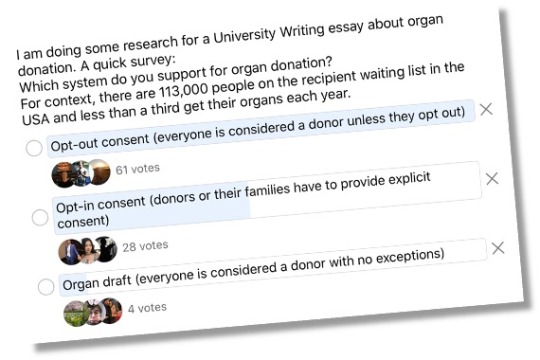
First, some statistics: The number of people awaiting organ donations in the United States is about 113,000 (“Transplant Trends”). In 2018, only 36,500 transplant operations were carried out. These included kidney (21,000), liver (8,250), heart (3,400), lung, pancreas and intestine transplants. Most of these organs were harvested from deceased donors (10,700) while living donors – who can only safely part with a kidney each and a segment of their liver – numbered only 6,900. The waiting period before receiving a donated organ can run up to three years. Clearly, the shortage is very problematic considering the terrible suffering of patients on the waiting list who make do with artificial support (dialysis machines for example) until relief arrives. In light of these dire statistics, might the other mooted options, namely having an organ draft or an opt-out system, speed things up and at least cut down if not end the shortage?
In a 1988 paper titled “The Case for a Post-Mortem Organ Draft and a Proposed Model Organ Draft Act”, Theodore Silver, currently Associate Professor of Law at Touro College in Long Island New York, made the case for the draft system. He writes “Every year in our nation 200,000 useful organs are consigned to the maggots for ready conversion to swill. The law indulges us in this practice while thousands anguish for want of buried parts” (681). In the face of this waste, Silver proposes an organ draft act that would ban the burial of organs as long as they are needed for the treatment of waiting patients (722). The act would “…authorize physicians and hospital personnel to remove from any cadaver such organs as would be useful to a living patient registered with a central registry. Organs would be evaluated and removed without consent of either the decedent or her survivors” (695). In support of his proposal, he argues that everybody stands to benefit as any citizen could one day find themselves on a waiting list, and states that a clear cut draft avoids the ambiguities and moral vagueness of the opt-out system.
Let us backtrack then and examine the opt-out system – apparently the most popular option among laymen as indicated by the Facebook poll and the in-class survey. The guiding principle here is that everyone is presumed to have given their consent as long as they have not expressly opted out. This is clearly a more conservative approach than the organ draft because there is a moment in which the physician must pause to check whether the case in front of him is still a donor or whether consent has been withdrawn. It is also more practical than the opt-in system as it avoids awkward confrontations between physicians on the one hand and distressed patients or relatives on the other as they try to pop the donation question at the most inopportune of times (‘Excuse me but can we have your permission to salvage your dying son’s organs?’). However, the system is problematic in that it takes a short cut around citizens’ right to make a conscious and well-informed decision. It does not take the time to ensure that people have clearly understood their options, weighed the risks, and made a well studied choice. As Silver puts it:
…presumed consent represents conscription in disguise. It gives citizens the impression that they have the right to refuse donation, when in fact many would not. Because many families might be entirely unaware that organs will be removed unless they object, organs will be removed without their consent or prior knowledge. Surviving relatives might then learn of the removal after the fact or not at all. In either event they have no opportunity to protest the removal, and, in a very meaningful sense, the organs are taken with no account for their wishes (706).
A wolf in sheep’s clothing is still a wolf! At least an organ draft system makes no attempt at hiding behind a vague and misleading aura of civility.
A question presents itself at this point. What exactly are we afraid of? What is the risk that we have alluded to in the previous paragraph? What is the nature of the wolf that we are seeking to tame? Why would some people prefer to opt out at all? So what if people’s right to determine what happens to their bodies posthumously is denied? Perhaps no other case better illustrates the hidden problem tugging at the back of our minds than that of Ruben Navarro.
A disabled man, Navarro 25 was on life support in a dedicated facility as he suffered from a debilitating neurological condition (McKinley). He suddenly went into cardiac arrest, was revived, and transferred to a local hospital sustaining brain-damage as his head was starved of oxygen. Navarro now became a prime organ donor candidate. A doctor at the hospital phoned his mother and obtained her consent for donation. As he neared death, a transplant team was called in to save his organs. When the time came, Navarro was wheeled to the operating room (where the transplant team were waiting), taken off the ventilator, and handed over to the transplant surgeon who now assumed control. He administered comforting sedatives to ease Navarro’s transition as he waited for him to die. Though unconscious, Navarro had other ideas and refused to go without a fight. Hour after hour passed as Navarro hung on. Frustrated, the transplant surgeon administered Betadine (a toxic substance) to hasten his demise! Still Navarro refused to cooperate and struggled for eight whole hours in total before finally letting out his final breath. Ironically, his organs were by then deteriorated beyond use.
This is the wolf we are trying to keep under control. An overzealous system that goes after people’s organs to fulfill annual quotas and in the process loses sight of one of medicine’s main goals: to do no harm. While having an opt-in system did not preclude Navarro’s case from happening, it does ensure that the whole mentality of transplant practitioners is geared in favor of caution and prudence making such horrific lapses an extremely rare and unlikely occurrence. Because of the opt-in feature, the entire organ donation ecosystem is given a conservative footing that ensures that donors’ wellbeing is not trampled upon, their individual wishes respected, and that they are afforded the best medical care. All effort is made to save their lives rather than scavenge their organs. It is not unreasonable to believe that under a more aggressive set up such as the organ draft or the opt-out system abuses would be more frequent, horror stories even more deeply horrifying, and predatory organ scavenging practices would be closer to the norm!
One such predatory idea that could have come to pass had the moderating ethos of the opt-in system not been present was an initiative proposed in 2008 in New York to introduce Rapid Organ Recovery Ambulances (RORAs) (Whetstine 114). Special ambulances crewed with transplant paramedics would be quickly dispatched to accident scenes. Once victims were pronounced dead by regular paramedics and a “no touch interim of two to five minutes elapses”, the RORA crew would take over and start working on the body to prolong its organs’ viability while the deceased’s family’s consent was being sought. Fortunately the idea was not successful and seems to have vanished away. Had an opt-out system been in place though, RORAs and their transplant crews could well have become a reality with the added responsibility of beginning in-situ organ removal at the accident site (‘consent is presumed, let’s go, disembowel the victim!’). It is very easy to see the public’s trust in all ambulances eroding away very quickly under such a scenario. The respect given them would have been turned into terror. Once viewed as noble agents of life they would now be seen as vultures of doom.
However let us de-sensationalize the discussion and, for the sake of argument, assume that policy makers and administrators are able to enact strict guidelines and enforce tough measures that rule out any practitioner transgressions and accidents under an organ draft or opt-out system. Having inoculated these options against any safety concerns, are they then acceptable alternatives to the current situation? Would the 70% of Facebook pollees who voted against the opt-in system be making the ‘correct’ choice? To answer this question we need to consider what kind of society we want to live in.
Paternalism, is defined by the dictionary as “the system, principle, or practice of managing or governing individuals, businesses, nations, etc., in the manner of a father dealing benevolently and often intrusively with his children” (Dictionary.com). Should we, in an attempt at a quick fix, outsource the organ donation decision to a paternalistic central authority (whether explicitly through an organ draft or implicitly through an opt-out system)? Should we as individuals give up our prerogative of making conscious and willful decisions to help others? Can we not be mindful of fellow humans in need? Can we not as adults be counted upon to make the right choices? Should we allow ourselves to be patronized by governments and treated as children? Commenting on a pro opt-out article published in the British Medical Journal (BMJ) one reader pointed out that…
given the shortage of organs in the UK, the preoccupation with the preservation of patient autonomy may seem dogmatic and possibly eccentric, but this inconvenient concept underpins the ethics behind modern medical practice. The State brushes autonomy and free will aside at its peril. If the Government goes ahead with presumed consent for organ donation, it will irrevocably alter the relationship between the State and its citizens (Shin).
To sidestep citizens’ autonomy with a stealthy (or even well advertised) opt-out system puts society on a slippery slope that slowly brings it closer to totalitarian modes of thought. A society in which the individual becomes subservient to a central authority’s view of what is best. It also opens the door to all sorts of administrative shortcuts that make life easier for those in power. Rather than make the effort to convince the public on all sorts of issues with well designed campaigns based on facts and information, rulers would devise all sorts of opt-out mechanisms to streamline their authority and unshackle it from any public oversight whenever possible.
In the context of organ transplants, the slippery slope begins with opt-out and presumed consent systems, moves on to take advantage of the poor and uneducated with legalized organ trading and commodification, starts questioning inmates’ rights to bodily sanctity, and eventually reaches the ‘logical’ conclusion that some people are less worthy of their organs than others. Political opponents in particular become highly desirable targets for organ harvesting. This is not idle fantasizing or scaremongering. Examples of societies around the world that have crossed the red lines abound. Iran has legalized organ trading under the guise of helping the destitute raise the funds they need for their survival. Rather than shoulder its responsibilities and build up its social security mechanisms and safety nets to the level needed by its citizens, the government found a way around its incompetence by allowing the poor to sell their organs for cash. The result is short term financial relief followed quickly by a fall into a vicious circle of disability, lowered earning power, and debt (Bengali). In China, evidence is mounting that the persecuted spiritual group, the Falun Gong, were mined for years for their organs (Rogers).
Judge Flaherty’s ruling in 1978 was spot on. While he may not have had in mind the legalization of organ trading or the mining of the bodies of prisoners of conscience, his wording (“To do so… would impose a rule which would know no limits, and one could not imagine where the line would be drawn”) pointed to an alert instinct. An instinct that had internalized the dangers posed by the misguided notion of promoting the wider good by violating the bodily sanctity of a person. A seemingly benevolent opt-out system commits such a violation on a massive population-wide scale. It changes the default condition by flicking the basic ‘bodily-autonomy-and-integrity-switch’ from ‘on’ to ‘off’. All of a sudden weird and perverse results start springing up everywhere. Objecting citizens “…are now obliged to assert their self ownership to the state” (Kennedy). What was once a virtuous act of altruism now becomes a form of tacit state oppression (Philips). Hospitals become ranked according to how well they process dead patients into transplantable organs. Opting-outers become a thing, get frowned upon, and stigmatized. A perverse dystopian situation is summoned out of nowhere.
The only way to promote free and confident societies and work towards their sustainable uplifting and moral advancement is by holding the rights of their individuals sacred. A good area on which to focus would be to protect the opt-in organ donation system while continuing to work on convincing people to willingly and freely sign on. Thomas Jefferson once said “the price of liberty is eternal vigilance”. People should always remain vigilant and not Facebook-poll their rights away no matter how convenient or inconsequential such a step may seem.
The good news is that efforts to grow the number of donors have paid off and there are now 145 million people in the US who have opted in and registered to donate their organs (Organdonor.gov). That is almost 70% of the adult population (Infoplease.com). An impressive statistic that shows a high level of public awareness and altruism and negates any need to tamper with the status quo.
Word count: 2687
Works Cited
“Cousin Wouldn’t Donate Life-Prolonging Marrow – Anemia Victim McFall Dies of Hemorrhage” August 11, 1978 (Vol. 88, Iss. 63) - Image 11. Michigan Daily Digital Archives, https://digital.bentley.umich.edu/midaily/mdp.39015071754621/1061.Accessed 5 Nov. 2019.
“McFALL v. SHIMP | 10 Pa. D. & C. 3d 90 (1978) | Ampc3d90189 | Leagle.Com.” Leagle, https://www.leagle.com/decision/197810010padampc3d90189. Accessed 21 Nov. 2019.
“Transplant Trends.” UNOS, https://unos.org/data/transplant-trends/. Accessed 4 Nov. 2019.
Silver, Theodore. "The Case for a Post-Mortem Organ Draft and a Proposed Model Organ Draft Act." Boston University Law Review, vol. 68, no. 4, July 1988, p. 681-732. HeinOnline.
McKinley, Jesse. “Surgeon Accused of Speeding a Death to Get Organs.” The New York Times, 27 Feb. 2008, https://www.nytimes.com/2008/02/27/us/27transplant.html.
Whetstine, L.M. “Ethical Concerns with Rapid Organ Recovery Ambulances.” The Ethics of Organ Transplantation, edited by Steven J. Jensen. Catholic University of America Press, 2011.
“Definition of Paternalism | Dictionary.Com.” Www.Dictionary.Com, https://www.dictionary.com/browse/paternalism. Accessed 23 Nov. 2019.
Shin, Gee Yen. Presumed Consent Is Too Paternalistic. Nov. 2019, https://www.bmj.com/rapid-response/2011/11/01/presumed-consent-too-paternalistic.
Bengali, Shashank, and Ramin Mostaghim. "'Kidney for Sale': Iran has a Legal Market for the Organs, but the System Doesn't always Work." Los Angeles Times, Oct 15, 2017 https://www.latimes.com/world/middleeast/la-fg-iran-kidney-20171015-story.html
Rogers, Benedict. "The Nightmare of Human Organ Harvesting in China." Wall Street Journal, Feb 06, 2019. https://www.wsj.com/articles/the-nightmare-of-human-organ-harvesting-in-china-11549411056 .
Kennedy, Laura. “Will an Opt-out Organ Donation Scheme Impact Our Bodily Autonomy?” The Irish Times, https://www.irishtimes.com/life-and-style/people/will-an-opt-out-organ-donation-scheme-impact-our-bodily-autonomy-1.3752327. Accessed 28 Nov. 2019.
Philips, Melanie. “Organ Donation Is a Noble Act - but We Must Never Be Denied the Right to Choose.” Mail Online, https://www.dailymail.co.uk/columnists/article-508042/Organ-donation-noble-act--denied-right-choose.html. Accessed 28 Nov. 2019.
Organ Donation Statistics | Organ Donor. http://www.organdonor.gov/statistics-stories/statistics.html. Accessed 23 Nov. 2019.
“Demographic Statistics for United States.” InfoPlease, https://www.infoplease.com/us/comprehensive-census-data-state/demographic-statistics-342. Accessed 23 Nov. 2019.
0 notes
Text
Meet Lena Dunham’s Podcasting Partner, True Crime Zine Queen Alissa Bennett
Link Buys Now: https://kingteeshops.com/meet-lena-dunhams-podcasting-partner-true-crime-zine-queen-alissa-bennett/
Meet Lena Dunham’s Podcasting Partner, True Crime Zine Queen Alissa Bennett
“You know what rich people love? Fucking Egypt,” says Alissa Bennett, director at Gladstone Gallery, zine queen, Lena Dunham’s newly minted podcasting partner, serial muse to artists like Alex Bag, ex-model, and ex-ex-wife of Banks Violette, the bad boy breakout artist of the early aughts. (They married and divorced, twice.)
Gesturing at the majestically tacky granite sculptures of sphinxes flanking the entrance, Bennett murmurs in her wry deadpan, “I can’t believe no one leaves this bitch any flowers.” We’re marveling at the hulking Egyptian revival mausoleum of Barbara Hutton, famously dubbed “Poor Little Rich Girl” by the press for throwing a deb ball at the Ritz during the Depression that would have cost $842,000 today. (Within a few years, Woolworth Girls—the little-appreciated cogs in the machine that was Hutton’s father’s well oiled fortune—would lie in wait outside hotels to throw eggs at her.)
I’ve tagged along to Woodlawn Cemetery in the Bronx for Bennett’s annual pilgrimage to celebrate the socialite. Bennett dedicated one of her zines about bad behavior to Barbara Hutton, out of reverence for the heiress’s belief that money should be spent, and happiness can be bought. The grave’s opulence mirrors its inhabitant’s distaste for boredom and being scaled, and highlights her yen for exoticism, largesse, and trinkets. For one wedding—she married seven men—Hutton demanded Cartier make her a “Balinese wedding tiara of tortoiseshell, with a diamond pattern identical to the blossoms of her wedding veil.” (Later, she bought Catherine the Great’s jewels.)
This isn’t Bennett’s first time in a graveyard. In fact, most of Bennett’s interests start with a dead body. As a young fashion model with bleached eyebrows, she was locked in Père Lachaise, in Paris, after drinking too much champagne on Chopin’s grave with “two boys, one of whom was later hit by lightning and died.” She remembers, as an ex-model, “hauling my gigantic pregnant body past 29 Avenue B” to see the building GG Allin died in. When that baby was in elementary school, she guiltily stalked a memorial using her “young child and his poor skateboarding skills as a means of moving closer to the gathering in the park.” (The next day her anonymous sources at the memorial clandestinely sent her the “holy grail” of postmortem ephemera: “A link to a 13-page typed transcript of the seven eulogies delivered at the funeral.”)
I should mention that—besides having a rolodex of people who want to talk about dead people—Bennett is whip-thin and translucently white as a ghost. And that her dear friend, the artist Bjarne Melgaard, put a picture of her brushing her teeth on the cover of a book called Alissa Bennett: Laying the Ghost? And that we were originally introduced, one person removed, by a decorator who selected rosewood closets for Larry Page’s house, only to get an irate call that the scent was “killing him.” (The decorator has since died, unexpectedly, of unrelated causes.) And that she’s published an entire series of zines about criminally-minded fuck-ups, many of them now deceased, with the cult avant-garde publisher Frank Haines, a psychonaut from Florida who moonlights under an alter ego anagram of Ted Bundy.
This year, she launched The C-Word with Lena Dunham, a podcast that trawls through binders of dead or forgotten women dismissed by society as crazy, cataloging crimes and misdeeds, from murder to merely having once been alive. The opening line of the podcast? “I’m internationally reviled celebrity Lena Dunham, and I’m Alissa Bennett, historian of bad behavior.” Who better to talk about women society hates—from Judy Garland to Johnson and Johnson heiress, Casey Johnson—than a celebrity we all love to hate, and a woman who dedicates her free time to stalking dead people?
The podcast is a savvy marriage of Dunham’s mood—the distillation of years watching people online say she’s nuts—and Bennett’s life’s work, a series of true crime revisionist zines: Dead is Better (2016), Legalize Crime (2016), Bad Behavior (2017), I Expected Something Nice (2017), and Pretend You’re Actually Alive (2019). I say revisionist, because Bennett plays a sympathetic graverobber of sorts, retelling the stories of those who have been subject to the “drive we have to exsanguinate public women.” It might be more accurate to call Bennett a eulogist gone off the rails, in that she addresses the dead directly. She’s written “short devotional texts” personally addressing Michelle Carter (the teen who texted her boyfriend to kill himself), Anna Nicole Smith, Heidi Fleiss (Hollywood madam), and artist Theresa Duncan (“You began attending 9/11 truth movement meetings…people still wonder if we will ever get to read the 27-page legal document you were preparing for your Scientology lawsuit”).
Bennett takes a non-consequentialist tack in writing about her heroines’s tragedies. She appreciates, above all else, a story girded by a kind of tragic, even poetic, optimism. “I appreciate your commitment to the idea that a new life is just a Greyhound bus ride away,” she writes. “Oh I have dabbled in reinvention myself—I have pretended to be studious and organized and ‘engaged.’” Activities someone else might write off to derangement, Bennett celebrates as creativity: “Your interrogation tapes are incredible…You used the euphemism ‘nose job’ to describe the initial gunshot to Ryan’s face.”
It’s important to note that she doesn’t frame anything as a cautionary tale. They’re more like sendups, as if she’s submitting a post-mortem application for her subjects’s icon status. Of Elizabeth Siddal—the 19th-century artist’s model who miscarried “rowing a boat around a lake at night and writing a poem to the dead baby” inside her—Bennett writes, “I understand why you finally had enough and overdosed by your fireplace with a note pinned to your nightgown.” Her subjects aren’t A-list celebrities, or rarely. “There are always going to be people who are interested in investigating culturally significant people. I’m more interested in failure. I relate most to disappearance,” she says. Spectacular failure, really, is her subject, and it throws her into a “death obsession lustmord.” (Of Peaches Geldof: “I read that Reddit feed about the time she did heroin with a stranger and then took him to the Hollywood Scientology center where they took tons of Niacin and sat in the sauna…”)
Much of Bennett’s scholarship occurs in semi-abandoned corners of the internet flat with the dust of understimulated hit-counters. She scours websites like Bestgore, Websleuths; FindaDeath.com (“Amanda [Peterson] you are special to me as the only celebrity I ever commented on in a public forum. I would call this forum a must read.”); dead people’s mother’s blogs; even self-published, unauthorized, fan-written scandal biographies. In Bad Behavior, she addresses “Call Girl Killer” Alex Tichelman, the woman who accidentally killed a Google executive: “In my experience, the parents of murderers are not reliable judges of character, so I felt very lucky when I stumbled upon a 46-page-long Topix forum… One of the most remarkable things about these comments is that almost everyone who knew you as a teenager uses exactly the same word to describe you, and that word is off.” Bennett happily watches YouTube tapings of 48 Hours, Dateline, Hard Copy, Dr. Phil, E True Hollywood Story; Nancy Grace; Lifetime re-enactments of crimes; Candice DeLong’s “Deadly Women”; episodes of Unsolved Mysteries. She sources National Enquirer post-mortem photographs; she reads non-fiction books like Mike Sager’s Scary Monsters and Super Freaks and Suicide in the Entertainment Industry (which she read while attending “a pathetically produced murder mystery weekend in Jim Thorpe, Pennsylvania”); and pornography forums.
She notes that a Yahoo group dedicated to Brittany Murphy claims that she picked up her Vicodin under “Lola Manilow,” and uncovers a website Murphy’s ex created after her death “where he posted a lot of horrible photographs that he took of you [dressed] as a clown.” She finds someone selling the handles from Judy Garland’s casket.
At the end of the day, though, the most interesting person in the zines, again and again, is Alissa herself. Like most obsessives, she’s worth obsessing over. It’s hard not to view her as a little touched. A snapshot of her 20s (I’ll let you find out about the rest of her life in the zines): Seventeen-year-old Alissa follows an older man to New York from Rhode Island after high school. He dumps her, so she rents an apartment in Brooklyn with the money she steals from her cashier job at a hair salon downstairs from the Saint Mark’s Hotel. (“A real loser job for 1996.”) Within a year, she’s discovered by a model scout, who cuts her hair and sends her to London to meet Edward Ennufil, who books her for two shows on the spot: Junya Watanabe, and the now infamous Hussein Chalayan “Burka show,” with models dressed in successively diminishing fabric. (“I was the cut-off before Zora Star showed full bush.”) She’s twenty years old. Steven Klein starts booking her for dozens of magazines. She moves to London, where lands the cover of i-D, and Dazed and Confused, and Juergen Teller includes her in his famous Go-Sees portrait series. She meets her future ex-ex-husband Banks Violette, the catalyst for an epiphany that “this guy is so smart and I’m like a stupid idiot.” This is the kind of epiphany, for a normal person, that would lead to a new hobby, or something.
But Alissa, incapable of doing anything halfway, quits modeling and moves back to New York to become a “passionless shop girl at If Boutique.” It’s just more dignified. For a few years, she actually believes this. She marries Banks, and gets another shopgirl position. But watching people spend money all day is demoralizing. Her whole life was suddenly demoralizing. (Banks was getting “really, really famous and I’m like, I’m just a loser who works at the Alexander McQueen shop.”) In a fit of panic, she applies to college at the New School, where she…meets a virginal 18-year-old Lena Dunham, crying in a bathroom stall after their Fashion and Identity Formation seminar. (Lena transferred to Oberlin soon thereafter, but their friendship was clearly written in the stars.) She graduates, and Banks gets her a better job, working at the gallery Luxembourg/Dayan. They divorce, remarry, and divorce again. She’s still in her twenties, by the way, and coming to the only worthwhile lesson from that decade: it’s just easier if you make something of yourself than to be somebody’s +1.
“Not only did I feel contaminated by the failure of a marriage that I had been counting on to save me from ever having to accomplish anything myself, but I also suddenly understood that I’d been foolish to believe that a rich person could like me on my own now that I was without an art-star husband,” Bennett writes in her newest zine.
It makes sense, in retrospect, that someone so committed to seeing herself as a loser, a word Bennett uses a lot to describe herself—despite everything always being, in my opinion, kind of glamorous—would become a historian of fuck-ups and bad behavior. (For the record, Bennett remains in the art world to this day; she has the same job as Jennifer Lawrence’s fiancé.)
No one tell her she’s cool; the work would suffer.
0 notes
Text
How To Use Outreach to Generate Traffic, Backlinks, and Authority
You might not believe this, but it’s true:
Before he became a blogging superstar, Jon Morrow was struggling.
He’d been blogging for a couple of years but he’d hit a brick wall.
Actually, it was a glass ceiling. The glass ceiling of the blogosphere.
That’s when you reach 100 visitors a day and can’t go any further. Nothing you do makes a blind bit of difference.
So he quit what he was doing.
Gave up blogging completely.
And about 6 months later he hired a blogging expert to do a post mortem – examine all his stuff and tell him what he’d been doing wrong.
The answer was simple but astounding: “No one knows who you are”.
"Yeah, but isn't that the point of publishing great content? You write lots of great stuff, and then the word spreads, and popular bloggers find out about you?"
"No," replied the expert. "Popular bloggers find out about who you are, and THEN they read your content, and THEN they link to you. Connections come first. Great content comes second."
Great content comes second? Seriously?
That was an eye-opener for me and I’m guessing it will be for you too.
In a nutshell, you need to get on the radar of the influential bloggers in your niche, form relationships with them, cultivate those relationships, and then let your top quality content do its work.
But how exactly do you get on their radar?
That’s what I’m going to show you in this article – three kinds of influencer outreach that will get you noticed by Influencers and bring you traffic, backlinks, and authority.
1. Expert Roundups
Have you ever wondered how bloggers get chummy with the key players in their niche?
They write expert roundups!
a) Are Roundups Still Effective?
But expert roundups have gotten some bad press recently, in particular from Rand Fishkin.
Rand’s main objections to expert roundups are:
They’ve been overdone because they’re easy to do
They’re a poor format for conveying information
They don’t generate links
There are certainly a lot of expert roundups floating around the blogosphere, most of them not well done.
Unfortunately, there’s a widely held view that with an expert roundup, other people write your post for you.
This has led to roundup posts that are nothing more than 20 to 30 expert opinions slapped together with hardly any Introduction and no Conclusion at all.
But this is good news! It means it’s a field where you can really shine if you put the work in.
In my experience, a good roundup post is far more work than a standard 1500-word article.
Why’s that?
Because the key to a good roundup is taking what the experts have said and summarizing it in a way that gives the reader a valuable overview of the topic.
And that’s exactly what’s missing from most roundups.
Expert roundups can be a very good format for conveying information, as long as you summarize or synthesize the information provided by the experts.
b) Roundups Generate Social Shares
What about backlinks?
Well, it’s true—roundups perform poorly in this area. But they generate a lot of social shares.
And according to SEO expert Brian Honigman, “social shares are the new form of link building”.
This is what he said:
“Today, links are mainly achieved through developing original content that is in turn, shared across social media. Links to your content on Facebook, Twitter, LinkedIn, Google+, YouTube and other social networks help the search engines understand what websites are credible and should be ranked for what keyword phrases.”
Brian is absolutely right!
How do I know?
Go to Google and type in “tips for first-year bloggers” and this is what comes up:
In position #2 is my roundup post – 19 Experts Reveal Their Top Tips For First Year Bloggers.
It beats a similar blog post from Blogtyrant titled: ‘5 Realistic Benchmarks for Your First Year of Blogging’.
Yet Blogtyrant has been around for much longer than my website and has a Domain Authority of 52, compared with my DA of 21.
We both targeted first-year bloggers. How on earth did I manage to rank higher in Google?
The answer is social media shares - 547 of them, and counting:
But it doesn’t stop there:
The main reason for doing roundups is building relationships with Influencers who:
Will share your content
Have massive followings
c) Building Relationships With Influencers
That’s where roundup posts excel!
There are at least 5 points of contact with each expert in the process of creating a roundup post:
The initial outreach
The expert's response
Your ‘Thank you’ email
Your email notifying them that the post is live
Their email telling you they’ve just shared it to their followers on Twitter
That’s a lot opportunity for building rapport with Key Influencers in your niche!
d) The 6 Key Steps To Creating A Roundup
There are six key steps to creating a successful roundup post:
Deciding on the Question
Finding the Experts
Finding Email Addresses
Doing the Outreach
Writing the Article
Promoting the Article
For a complete guide on how to do it, see my article ‘The Definitive Guide to Writing Roundup Posts That Go Viral’.
2. Top Lists
What if I told you about a technique that uses basic human psychology to get your content shared all over the Internet by people with large followings.
Would you be interested?
I thought so!
This is a strategy I stumbled upon in an article on Income Diary.
I was skeptical at first but decided to give it a try.
The results were astonishing!
More about that later.
First, the technique, as described by Josh Dunlop.
It’s quite simple. Just compile a list of 20 or 30 top Influencers in your niche.
Here are some examples of top lists created by Income Diary:
50 Most Influential People In Blogging 2010
Top 30 Female Internet Entrepreneurs
Top Earning Blogs
Top 30 Richest Young Entrepreneurs
20 Top Blog Sales
Here’s a top list I created about 10 days ago:
The Top 30 Marketers on Pinterest
There are four key steps to creating a Top List article:
a) Find The Candidates
The easiest way to do this is simply type into Google your keyword plus “top influencers”.
For my article on Pinterest marketers, I typed in Pinterest +”top marketers” (and variations).
I found about 5 lists that other people had compiled.
Then do a ‘skyscraper’ — if other people have created lists of 10, 15, and 20, you could go for 30 or even 50.
Remember: the more Influencers on your list, the more firepower you’ll have in terms of social media shares and backlinks.
b) Order The Candidates
This is pretty straightforward:
The title of your top list will usually imply some kind of ranking factor, e.g. most followers, richest, highest monthly web income, etc.
If your ranking factor is monthly web income, you’ll need to download their income reports and enter the data into a spreadsheet and then sort it by value.
For their article on Top Earning Websites, Income Diary analyzed the SEC 10-K reports submitted by publicly traded companies within 60 days of the company’s fiscal year end.
In my case, I simply found the Influencer’s Pinterest page and noted down the number of followers they had.
Sometimes there’s no objective ranking factor you can use. For example:
Top 10 Most Inspirational Bloggers In The World
In that case, you just need to make sure that there’s a plausible reason for each of your candidates to be included on your list.
c) Write A Paragraph Or Two About The Person
For this, you’ll need to look at their ‘About’ page and you may even have to drill down deeper into their website.
The kind of information you’ll be looking for is:
Who they are
What they do
How long they’ve been doing it
Where they’re from
If you want to get more specific, look at what sort of content they produce:
Articles / blog posts
Videos / screencasts
Podcasts
Infographics
You could even take your analysis a step further. If they mainly produce articles, what sort of articles:
Long form
Tutorials
Guides
Roundups
Interviews
Resources (Link Lists)
Checklists
Tip Lists
Case Studies
Reviews
Industry News
d) Reach Out To The People On Your List
Once your article is live, send an email to each of the people on your list.
All you do in this email is let them know they’re included in the list.
Don’t ask them to share the article or for a link or anything else. That will work against you!
Remember what I said about human psychology?
The whole point of this technique is that the people on your list will want to share your article.
Here’s the template I used for my Top 30 Pinterest Marketers list:
An important detail in this template is the last sentence.
It’s very important to let them know you’re happy to make changes to their listing, for a number of reasons:
It’s courteous and shows them you’re someone they can work with
You may have got something wrong, e.g. their area of expertise
It invites communication and that’s what this exercise is all about – building relationships
This technique leverages basic human psychology – we all need and want praise, recognition, and acceptance. As Mark Twain once said: “I can live for two months on a good compliment”.
And that’s why this technique is so effective: 30% to 50% of the people on your list will be honored, flattered and excited to be included.
What do you think they’ll do with your list?
Keep it to themselves?
No way!
They’re going to share it—on social media. And remember: these people have huge followings!
I published my Top Pinterest Marketers List on June 28th, 2017. At the time of writing (July 8th, 2017) the article has collected 197 social media shares!
The people on your Top List will also share your article on their website.
Influencers who get their names on these lists like to mention it on their ‘About’ page. So you may well pick up some valuable ‘do follow’ links.
Here’s an example:
3. Interviewing Influencers In Your Niche
I know what you’re thinking:
Me? Interview a big name in my niche? No way!
And anyway, why would they agree to be interviewed by someone they’ve never heard of?
But here’s the deal:
Interviewing is not that difficult, as long as you do your research beforehand
The Influencer you approach will know your name, if you follow the steps below
People like being interviewed because they like talking about themselves
And here are some reasons you’ll want to interview key players in your niche:
Increase your credibility
Drive traffic to your blog
Help your audience solve specific problems
But do you know the real power of Influencer interviews?
That’s right—relationship building.
Researching, conducting, and publishing an interview provides an amazing opportunity to build a working relationship with an Influencer that could take your blog to the next level.
And just in case you need reminding – on the road to blogging success, relationships come first, great content comes second.
Here are the key steps in putting together an Influencer Interview.
a) Getting The Interview
First of all:
You need to get on their radar.
You can do this in a number of ways:
Post comments on their blog
Tweet their latest blog posts
Sign up for their newsletter
Follow them on Twitter
When you reach out to an Influencer to ask for an Interview, here are the key points you need to cover:
Introduce yourself
Interview will be no more than half an hour
You will send the questions ahead of time so they can prepare themselves
Where and when the Interview will be published
Give the Influencer a choice as to method of interview (email, IM, Skype, phone call)
Show you’ve done your homework by referring to some aspect of their work or online profile
What’s in it for them (exposure to your subscriber base, promotion across your social media networks, a ‘do-follow’ backlink, etc)
b) Doing The Research
Believe it or not, some bloggers try to interview experts without doing any background research.
Big mistake!
Before conducting the interview, and ideally before reaching out, look at 10 to 20 items of content they’ve created in the last 12 months such as:
Blog posts
Videos
Podcasts
In addition, search up previous interviews they’ve done. This will allow you to:
Avoid asking questions they’ve already been asked
Go deeper into issues that were only touched upon in previous interviews
Identify topics they are passionate about
c) Deciding On Interview Method
As I said, it’s a good idea to give the Influencer a choice for method of interview—it’s more likely they’ll agree to the interview if they feel they have some control.
The options for method of interview are:
Email
IM
Skype / Google Hangout
Phone Call
However, the best option by far is to conduct the interview by Skype or phone.
Why?
Because a Skype or phone conversation allows you to ask unanticipated follow-up questions. And these follow up questions produce the real gems in an interview.
If you decide to interview by phone or Skype, you’ll need to record it. Here are some recording techniques:
Record by phone
Record by Skype
d) Setting The Interview Questions
Here are some questions that will always produce interesting answers:
How did you start off in [their niche or field of expertise]?
What were the main challenges you faced when you were starting out?
What’s the best advice you ever received?
What are the biggest hurdles that your readers’ face and how do you help them to overcome these problems?
What are the [SEO, marketing, outreach, content management] tools that you couldn’t do without
Who do you admire most in your field?
If you could start again, what would you do differently?
What has been your single biggest success?
What was your biggest mistake?
What’s the single most important piece of advice you would give to someone starting off in [their niche, area of expertise]?
What’s your next project?
Is there anything you’d like to add?
e) Interview Techniques
i) Introductions
Always introduce your subject—never ask them to introduce themselves.
ii) Anecdotes
Anecdotes are the lifeblood of interviews. Try to get your interviewee to share an anecdote or two.
One way to do this is to ask ‘When’ questions:
“When did you first realize this is what you wanted to do?”
“When was the moment you realized you could succeed in this?”
iii) Parroting
Parroting can be annoying in normal conversation. But in an interview, it opens doors.
For example:
Subject: “The business didn’t really take off until I started building an email list”
You: “An email list?”
Subject: “Yes, that was the turning point, it took us from…”
iv) Avoiding ‘Yes’ and ‘No’ Responses
Ask questions that can’t be answered with a ‘Yes’ or a ‘No’. These are questions beginning with ‘What’, ‘When’, ‘How’, and ‘Why’.
For example:
What were you doing before you started in [SEO, marketing, copywriting etc]?
How long did it take to turn your idea into a viable business?
Here’s an excellent video from Teachable on how to conduct an interview with an Influencer:
youtube
f) Promoting Your Interview Article
Want to know the best part of interview articles?
The subject you interviewed is going to share your article amongst their followers.
And it’s more than likely they have a large audience.
So let the subject know as soon as the article is live and ask them to share it.
Here’s a template:
Over To You
The Internet is literally swimming in content.
So it’s no surprise that in the blogosphere connections are more important than content.
Of course, you need to produce great content.
But without the right connections, your content will never get noticed.
In this article I’ve given you three kinds of blog posts that will build relationships between you and the Influencers in your niche:
Expert Roundups
Top Lists
Influencer Interviews
One last point:
When you hang out with Influencers, some of their authority rubs off on you. It’s unconscious, it’s just what happens.
In the minds of your readers, the very fact that these big names have appeared in your roundup, in your top list, or in your interviews adds to your authority.
In a nutshell:
Produce these three types of articles and you’ll get much more exposure for your content than you could ever get on your own.
And you’ll build traffic, backlinks, and authority.
If you have experiences with Expert Roundups, Top Lists, or Influencer Interviews, I’d love to hear from you in the comments below.
Rob Powell shows bloggers how to create content that builds traffic, backlinks, and authority. Download his FREE pdf: ‘The Definitive Guide on How to Write a Compelling Intro for Your Next Blog Post’
The post How To Use Outreach to Generate Traffic, Backlinks, and Authority appeared first on Ninja Outreach.
from SM Tips By Minnie https://ninjaoutreach.com/outreach-traffic-backlinks/
0 notes
Note
Gee why am I not surprised you have a shitty attitude towards reposting fanart. The vast majority of art that gets reposted comes from artists from Pixiv. Artists who don't speak much, if any, English and may not even be aware their work's being shared. Most of these artists do have very clear "DO NO REPOST" signs on their pages. If you don't know where it comes from, don't post it? It's not anyone's God given right to repost art that doesn't belong to them.
How do you know where THIS person who was put on blast by some random anon got their art from? I looked at the blog and those are google image addresses. They are just living a life with pretty art they see. Not making money nor claiming it as their own. Literally suck it up and deal with it yourself and stop trying to get everyone involved. If art gets stolen, tough shit it's the internet. You have the legal right to post whatever you want. But if someone takes it and reposts it as theirs yet doesn't make money off of it, you legally can't do shit. You can ask tumblr to take it down but they aren't binded by law to do so. Fix it if it bothers you. You can't stop the billions of people on the web from doing whatever the hell they want to. It's not your right in any capacity to complain about public domain non copyrighted art that isn't yours. If you post fan art without a copyright on public domain, you are subject to having it stolen. If you want the law involved and to make it actually illegal to steal your art, then go copyright it. Unless of course your inspiration for a peice of art is already copyrighted material. Logic trumps your emotions. Sure it sucks to get your art stolen and you may feel pretty bad, but legally it's not valid in court because you publicly posted it without copyright. It's the same reason you can't get in trouble for posting memes. It may be someone else's intellectual property, but it isn't and can't be copyrighted. And as a matter of fact putting them on blast is harassment. And that's more annoying than hearing someone having their art stolen. Making everyone else have to hear about it. Im not defending art theives. But im also not defending the loudmouths who don't know when to keep a situation private. It's a worse situation when you involve the fandom and add to the toxicity by creating a shit mountain out of a mole hill. Also if you think my additute is shitty, then you are going to struggle with people in the real world. Not everyone is fakely optimistic like the people on tumblr. So moral of the story, if you happen to get your art stolen ON TUMBLR. Just report them and stop "signal boosting" them. It adds unnecessary fuel to the fire. Just like the situation with bre-lla. They stole art. Fine, but instead of making a giant shit storm. Just contact tumblr and block them. Here's a story guys. In the case of shadman, some of you may know him. He's in legal trouble. Not for the loli porn but for a picture of a roblox character in gang attire. Roblox is copyrighted material and they are suing him and have shut down his website I believe. It may be his fanart. But it's still not intellectually his. Public people can take his art and repost it. But he can't sue cause it's not intellectually his (most of his characters are fan art of different series) He can ask that they take it down and they may out of good will. But if they are on a private website without a company host. They don't have to. Tumblr on the other hand will do something about it. But they don't legally have to. Rejet can sue most everyone here if they wanted to but they don't feel like it and they encourage it. You can say "mine" on a peice of fan art because they don't care. But technically it's rejet's intellectual property, and, if they wanted, can sue you for that. Another story. The first woman to find dna did not get her noble peace prize because she had her research stolen and submitted before she could. But she couldn't prove that it was hers and she didn't have anything legally binding her to the research so legally it was fair use. Eventually she was going to be recognized after the story broke, but she died and you can't recieve a noble peace prize post mortem. But even so, the men didn't get theirs taken away. Many inventions and patents can be patented by the "theif" who took them with no legal repercussions. Maybe a smack on the hand but nothing serious. This has happened before. 2nd Moral of the story. Not legally yours not technically theirs. But by the power of public domain, there is little you can do in the case of art theives unless you'd like rejet to sue both of you and demand it be taken down. 3rd moral: Stop making a mountain out of a mole hill. You won't do anything but split the fandom between those who agree and those who don't. There's no reason to blast people other than attention. 4th moral: most companies don't care too much about fan art because it's impossible to police over public domain. But that doesn't make it your intellectual property just because they are too lazy to do anything about it. 5th moral: fan art is technically a breach of copyright because if you take someone else's character and say it's that character it's still not your original thing. Imagine an art thief steals the mona lisa(assume leonardo davinci copyrighted it) and draws a moustache on her. Is it really not Leo's anymore? And if someone steals it from them, can they really go and sue the other guy? That's why i hate the complaints of art thieves. Draw what you'd like post what you'd like but the internet isn't a protective domain. Unless you've created and invented something. If someone steals from you against COMPANY policy. Then deal with it quietly with the company and the person. It may be upsetting but the law doesn't deal with upset. Unless you are upset with a copyright. Aka large companies like YouTube and Disney. Once something enters the public domain and not a second later it is 100% fair use by EVERYONE on the internet. Morally you can be upset but literally and legally no you cannot. Which is why the ones who complain bother me the most. It's like they have no understanding of the fair use laws or when something becomes public domain/fair use, copyright breach, or ect. Conclusion/TL:DR,Fanart itself is a breach of copyright whether the company cares or not. Posting said fanart to a public domain such as a public blog on public social media without a copyright=fair use. Meaning legally there is no art theft. Saying "don't repost my stuff" won't hold up in court. Dragging everyone in the fandom through YOUR mud and having people pick sides and splitting the fandom all for attention of this one person instead of maturely going to this person and Tumblr to solve the problem is a much a problem as the "theft" in the first place. Essentially this is one large moral cluster fuck. And LEGALLY this is the answer. I don't care what your morals say. I personally won't steal art because i have no desire to post art. But those who do, depending on what is being stolen, might have the legality of fair use on their side and copyrighted material against you. You can be sued by the company of the fanart you created but you cannot sue someone for taking it. Ps Tumblr has no jurisdiction over pixev posts and vice versa. Someone on pixev stealing tumblr posts can get away with it and someone on Tumblr stealing pixev posts can get away with it. Speaking in legal terms. Pss stealing an oc is entirely different because you are the sole creator.
0 notes